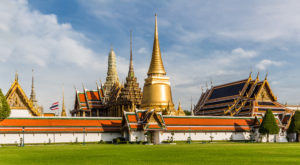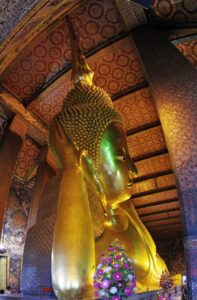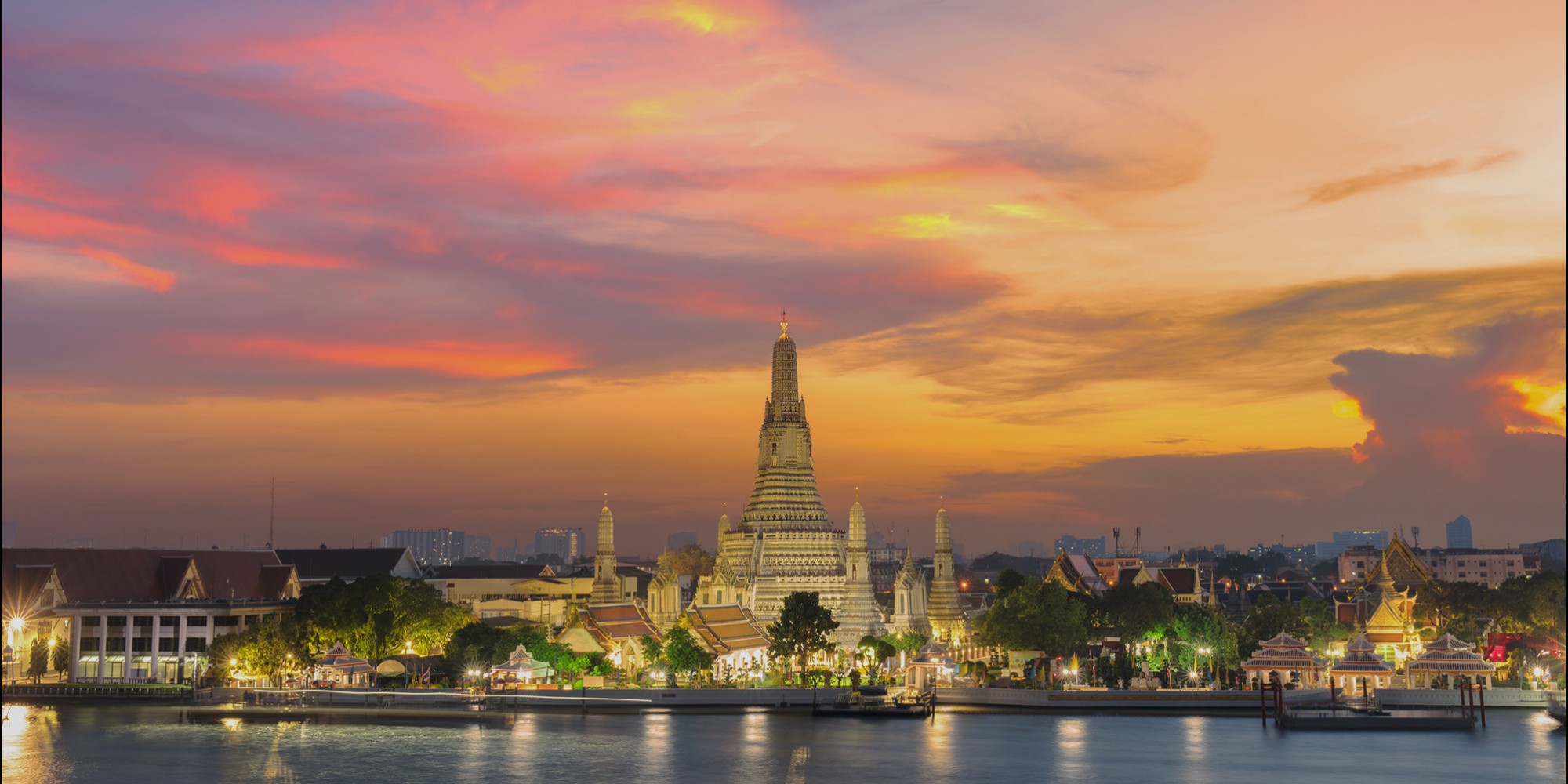
Wat Arun Ratchawararam Ratchawaramahawihan (Thai: วัดอรุณราชวราราม ราชวรมหาวิหาร “Temple of Dawn”) is a Buddhist temple (wat) in Bangkok Yai district of Bangkok, Thailand, on the Thonburi west bank of the Chao Phraya River. The temple derives its name from the Hindu god Aruna often personified as the radiations of the rising sun. Wat Arun is among the best known of Thailand’s landmark. The first light of the morning reflects off the surface of the temple with pearly iridescence. Although the temple had existed since at least the seventeenth century, its distinctive prang (spires) were built in the early nineteenth century during the reign of King Rama II

WAT ARUN : SPECTACULAR VIEWS
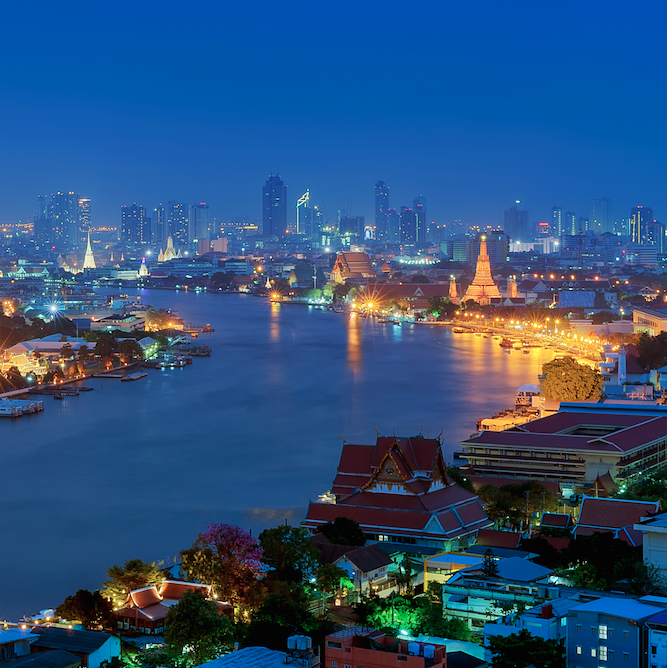
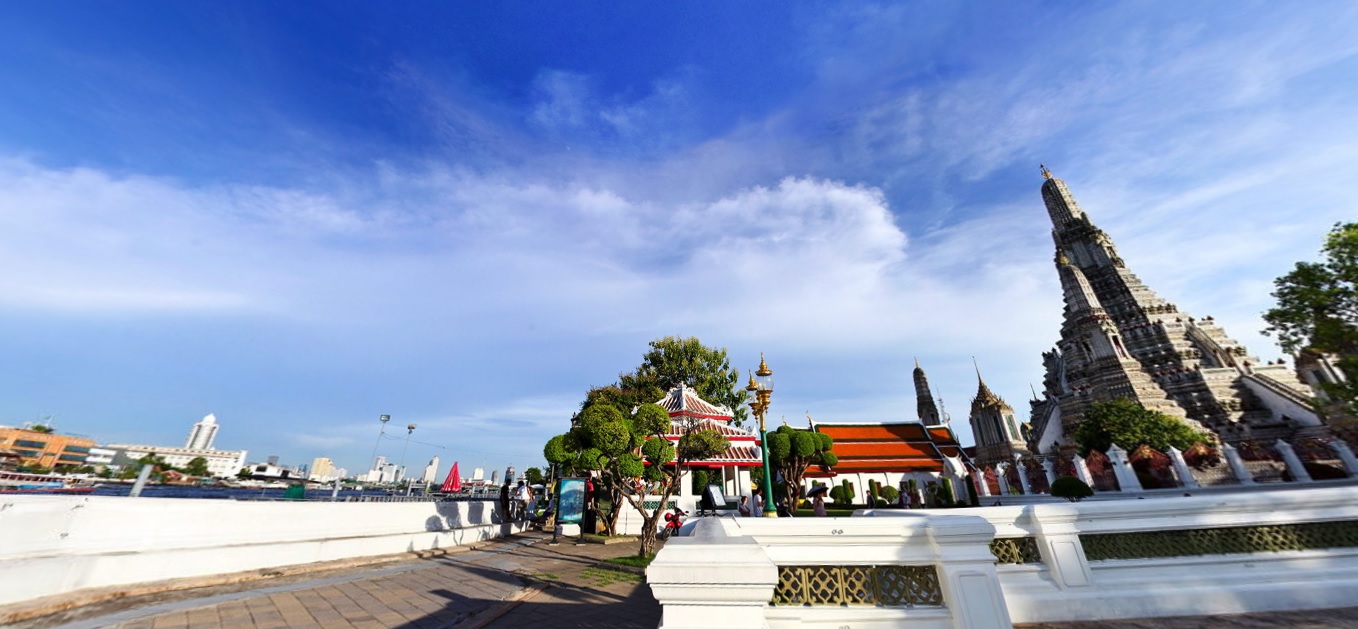
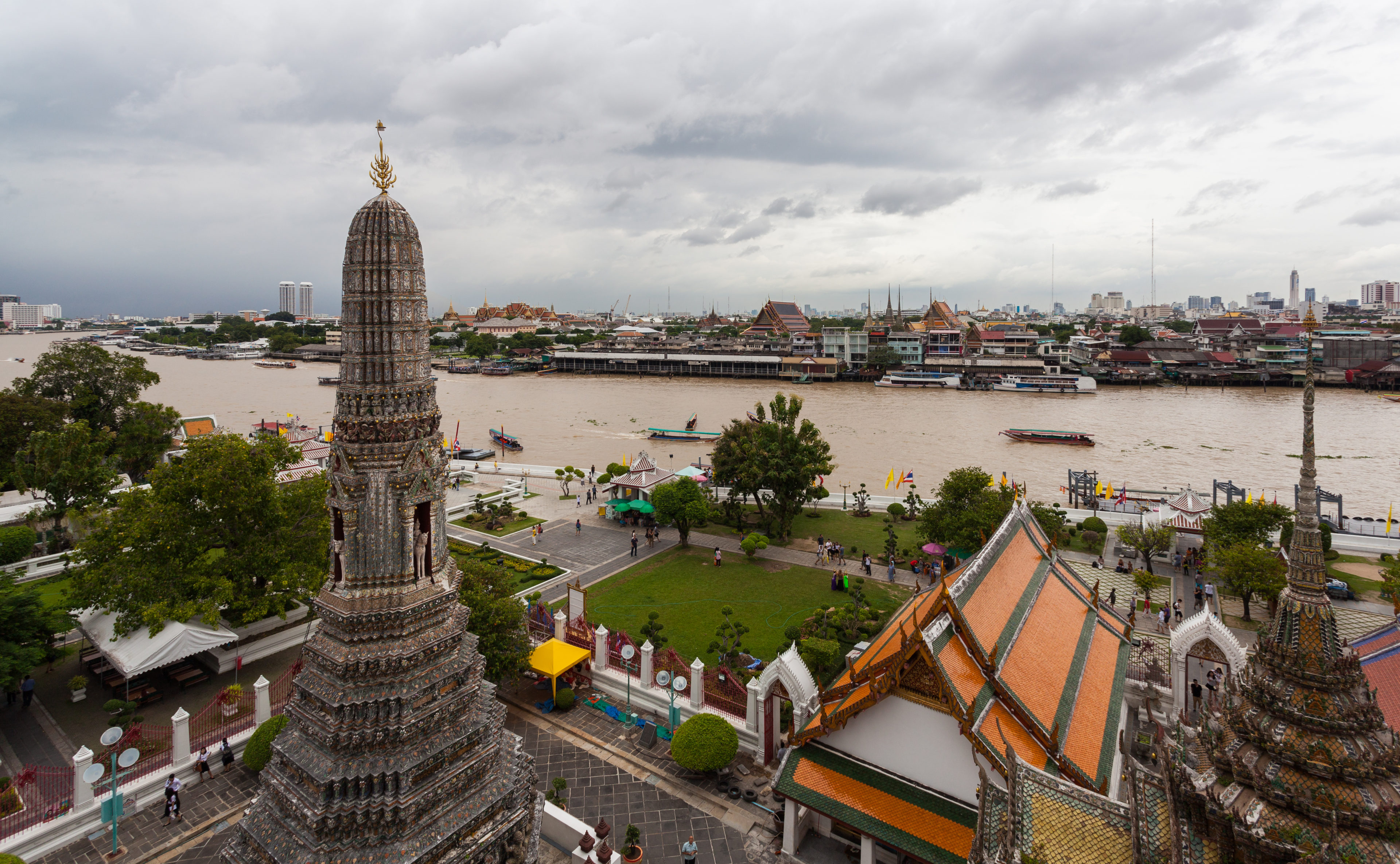
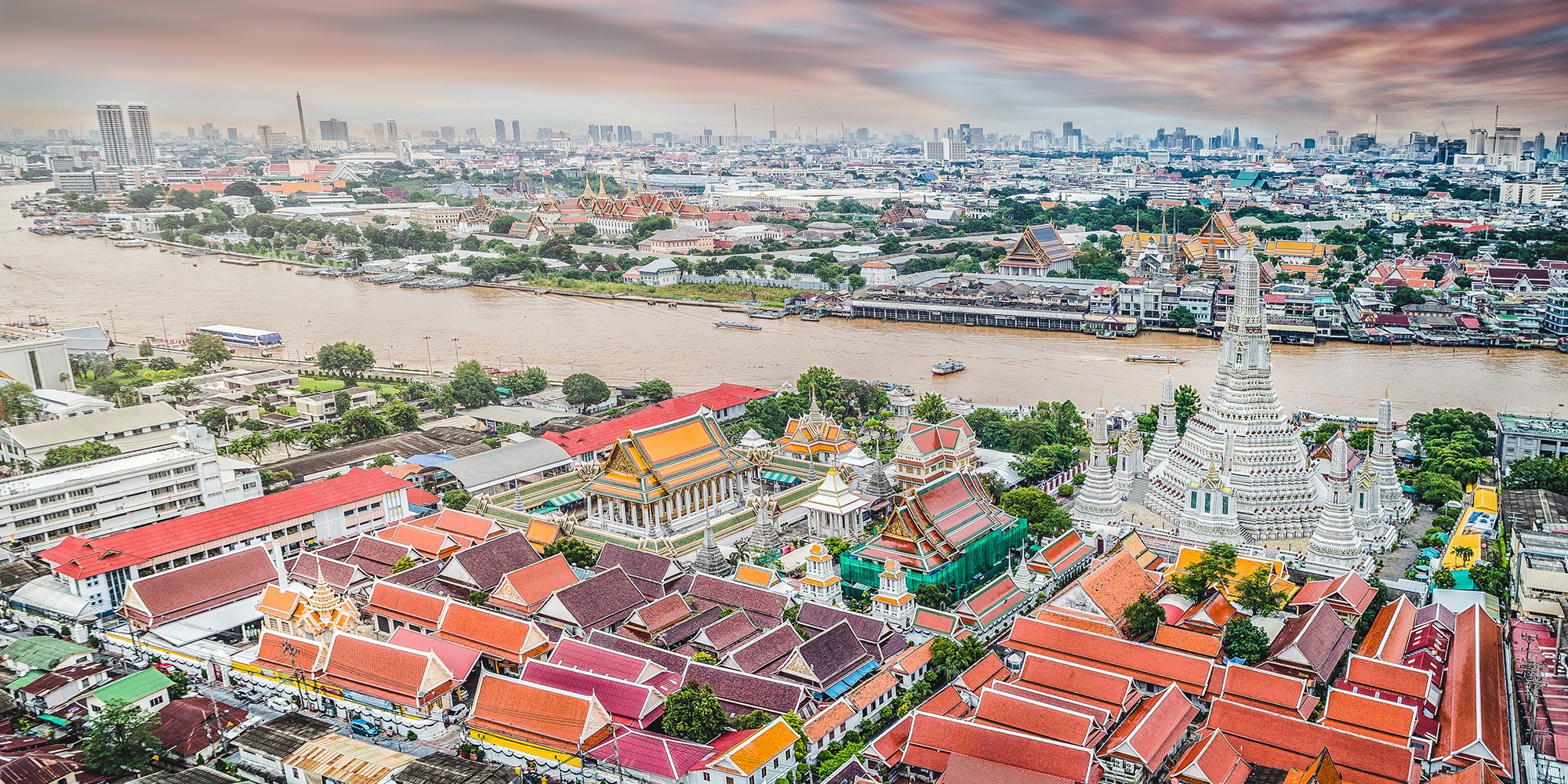
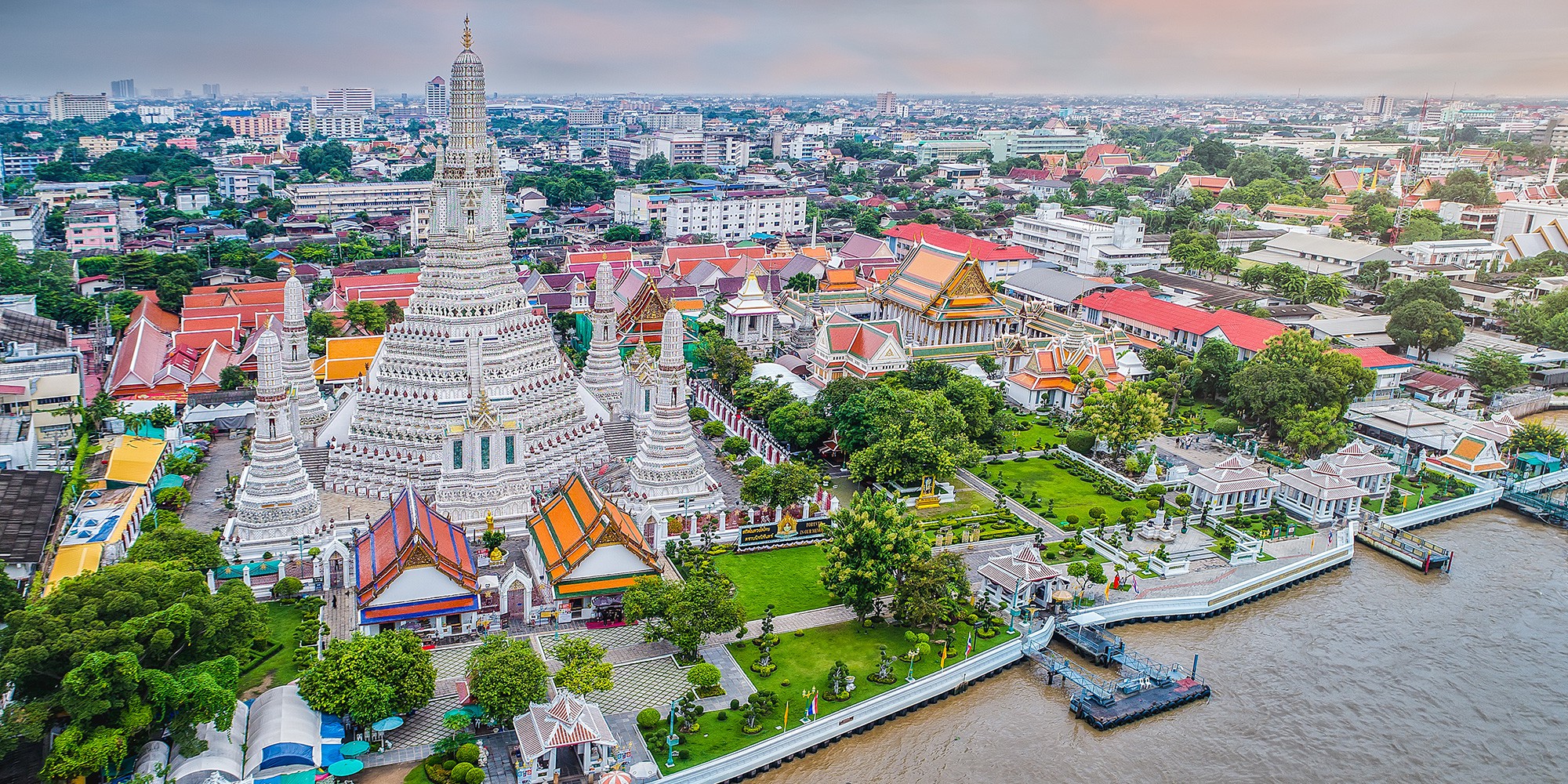
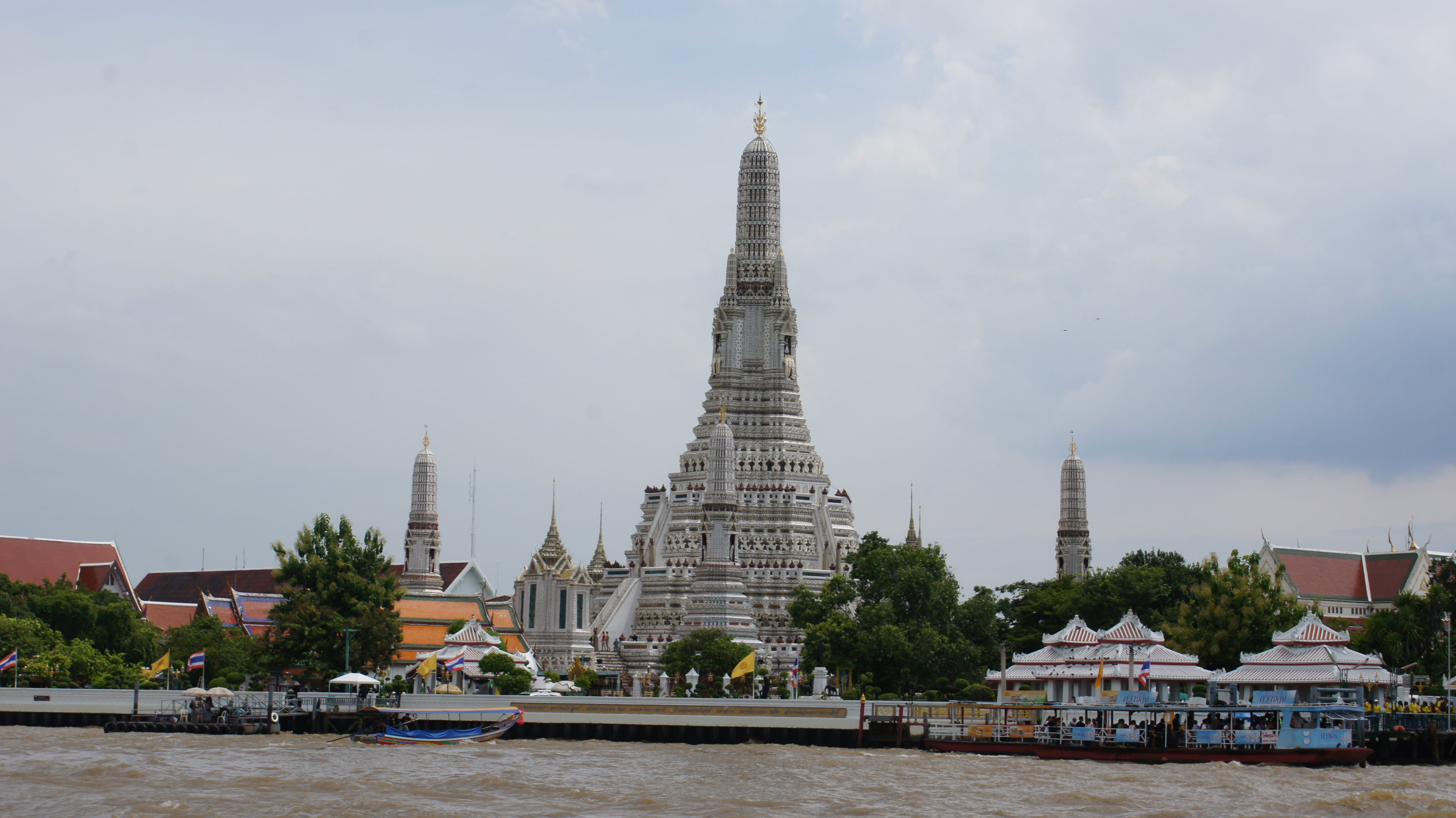
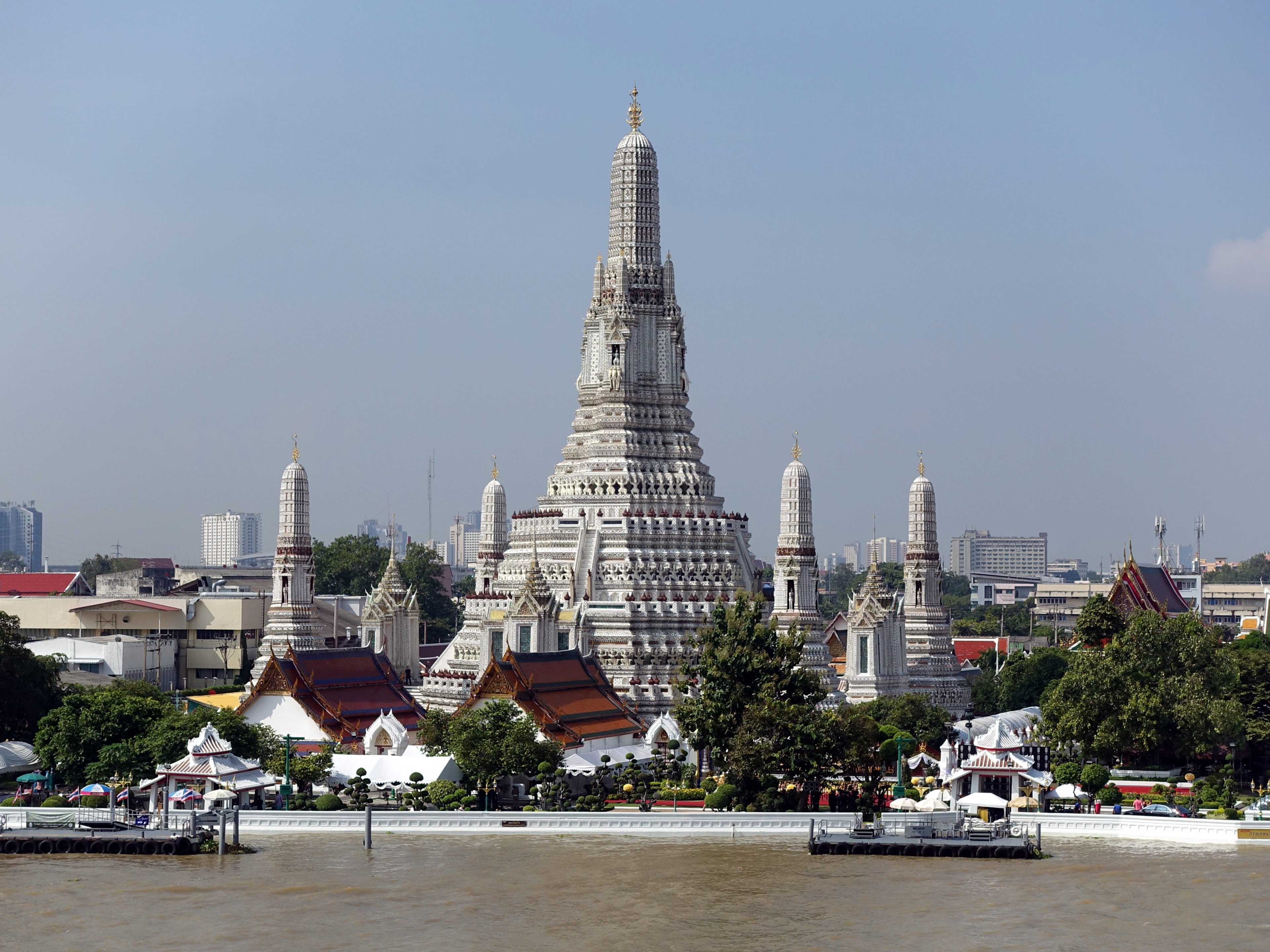
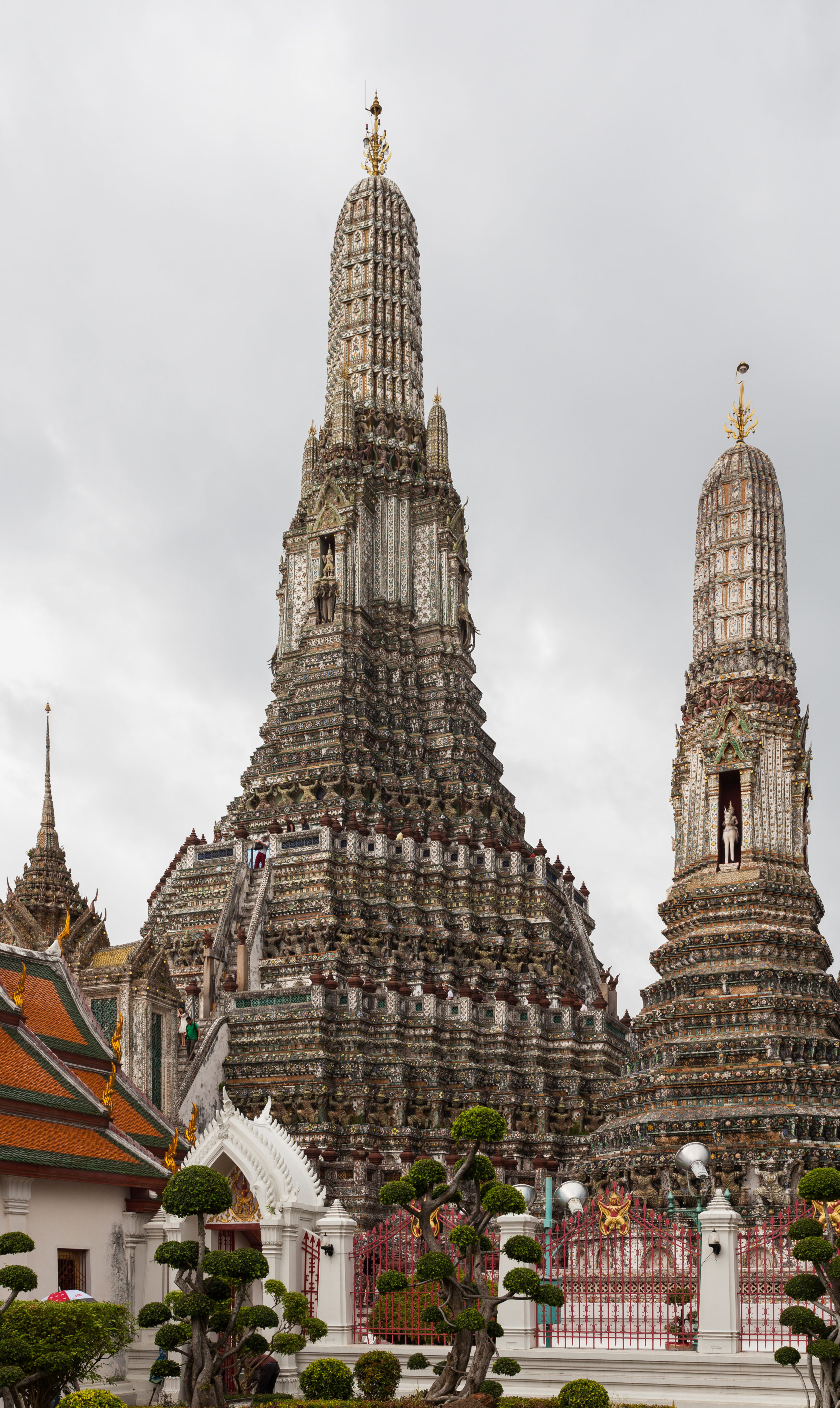
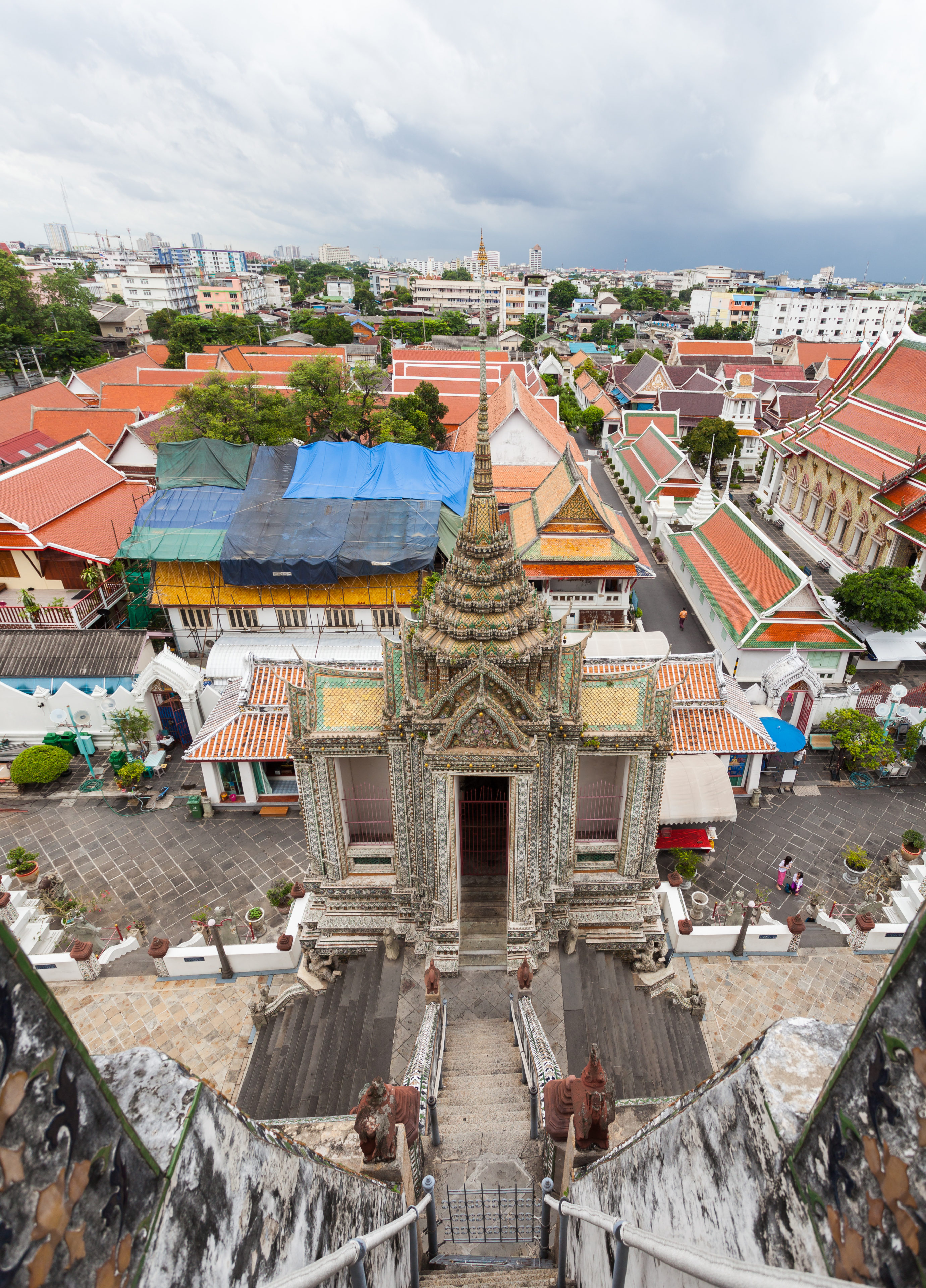
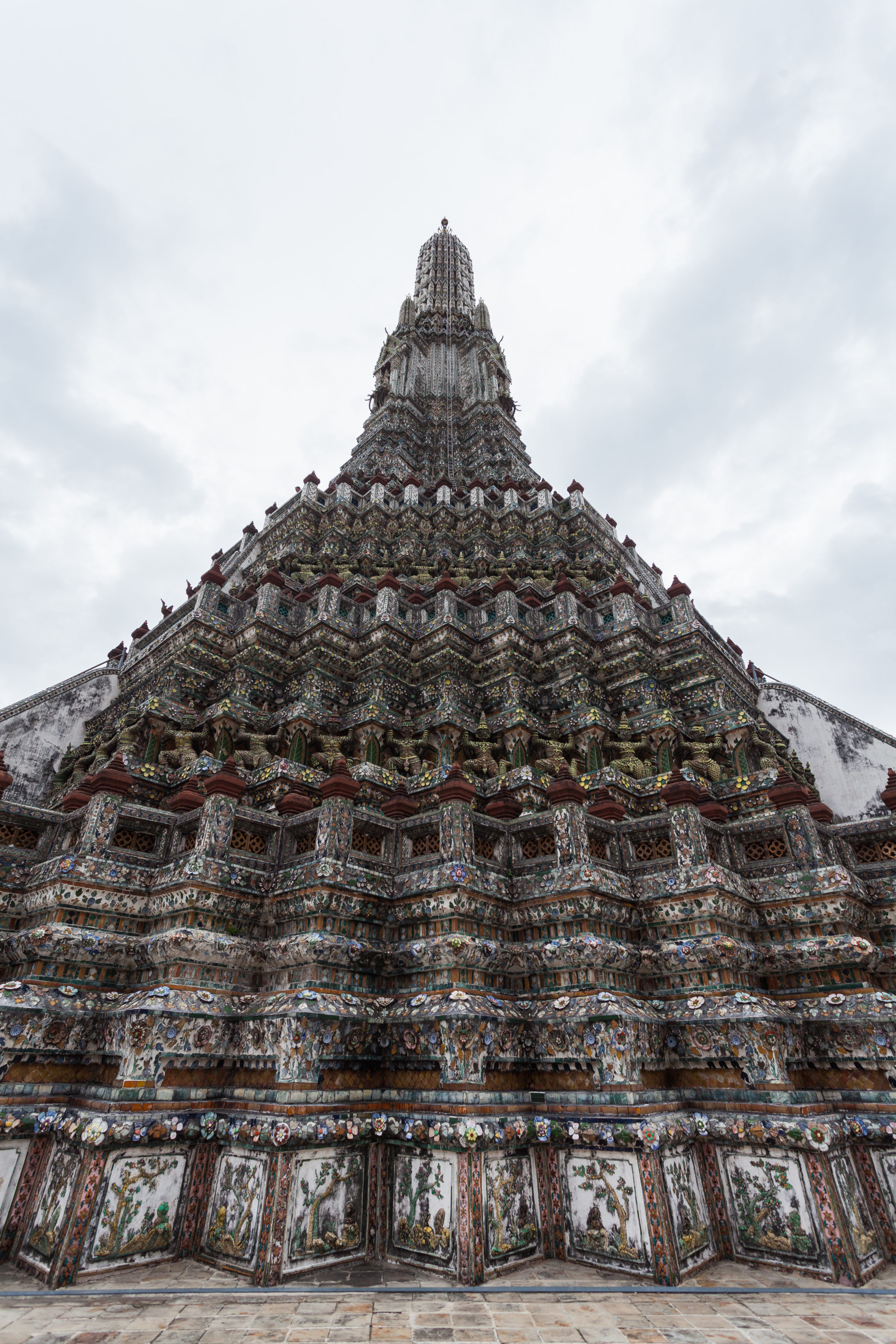
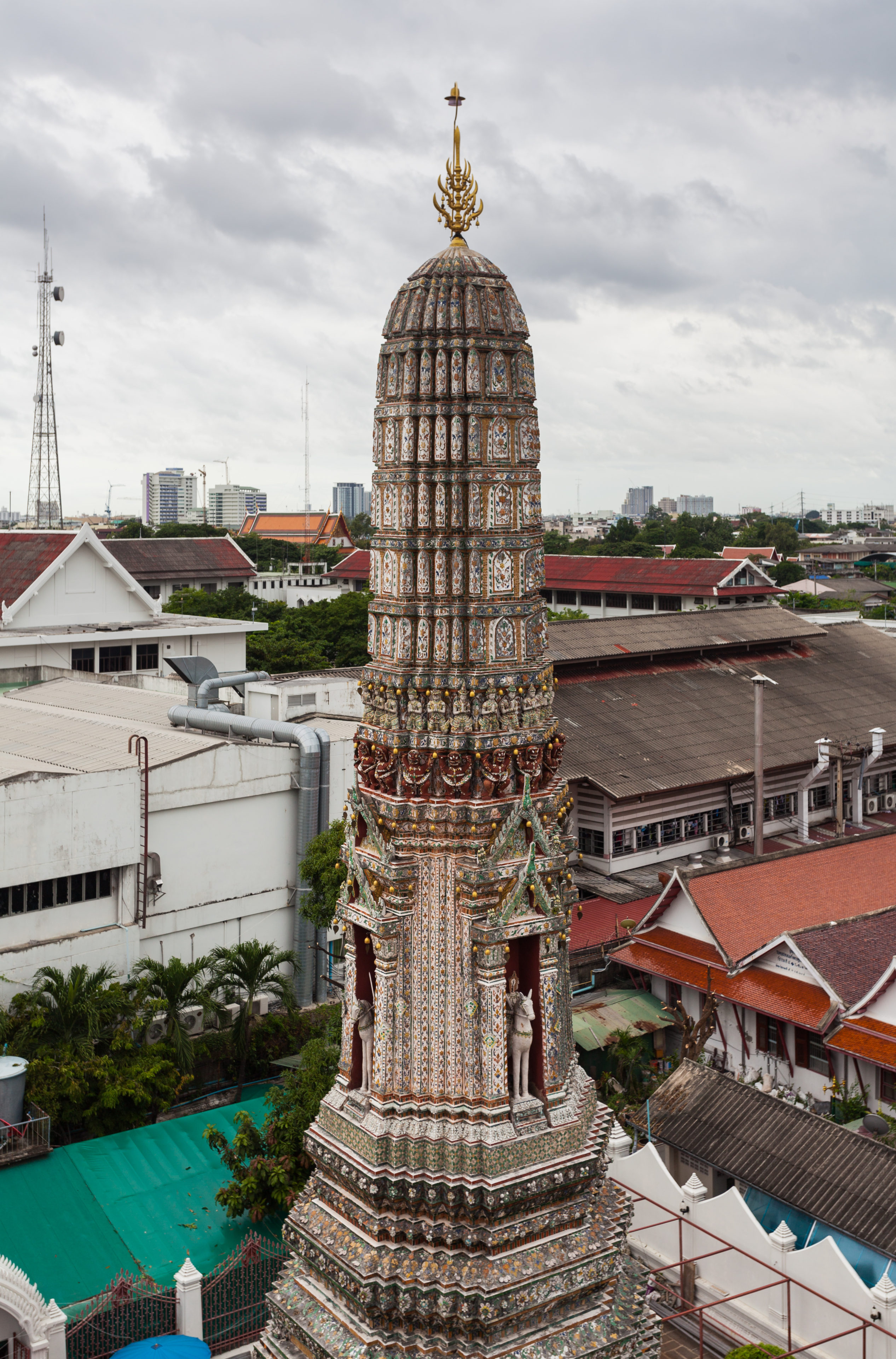
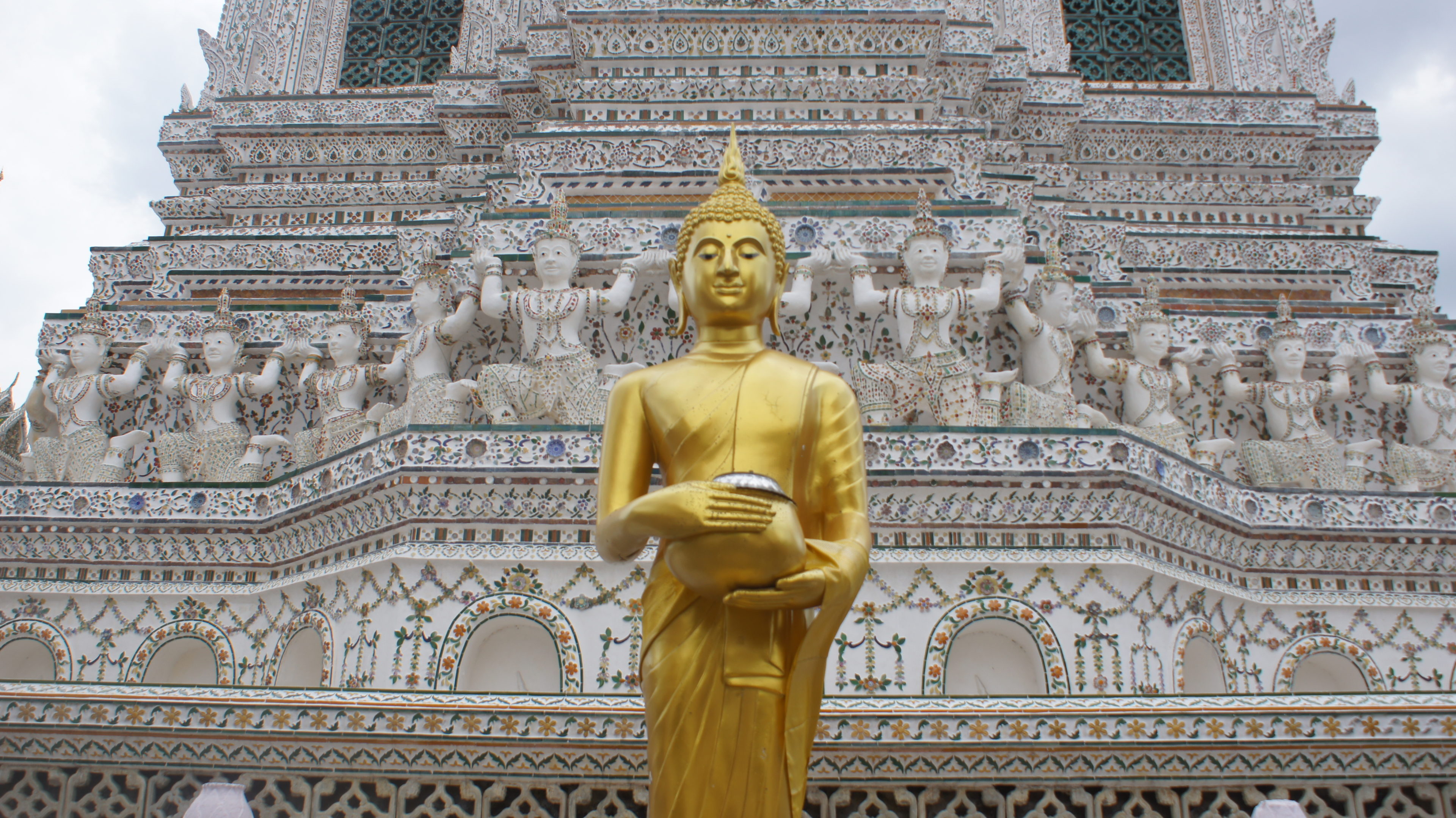
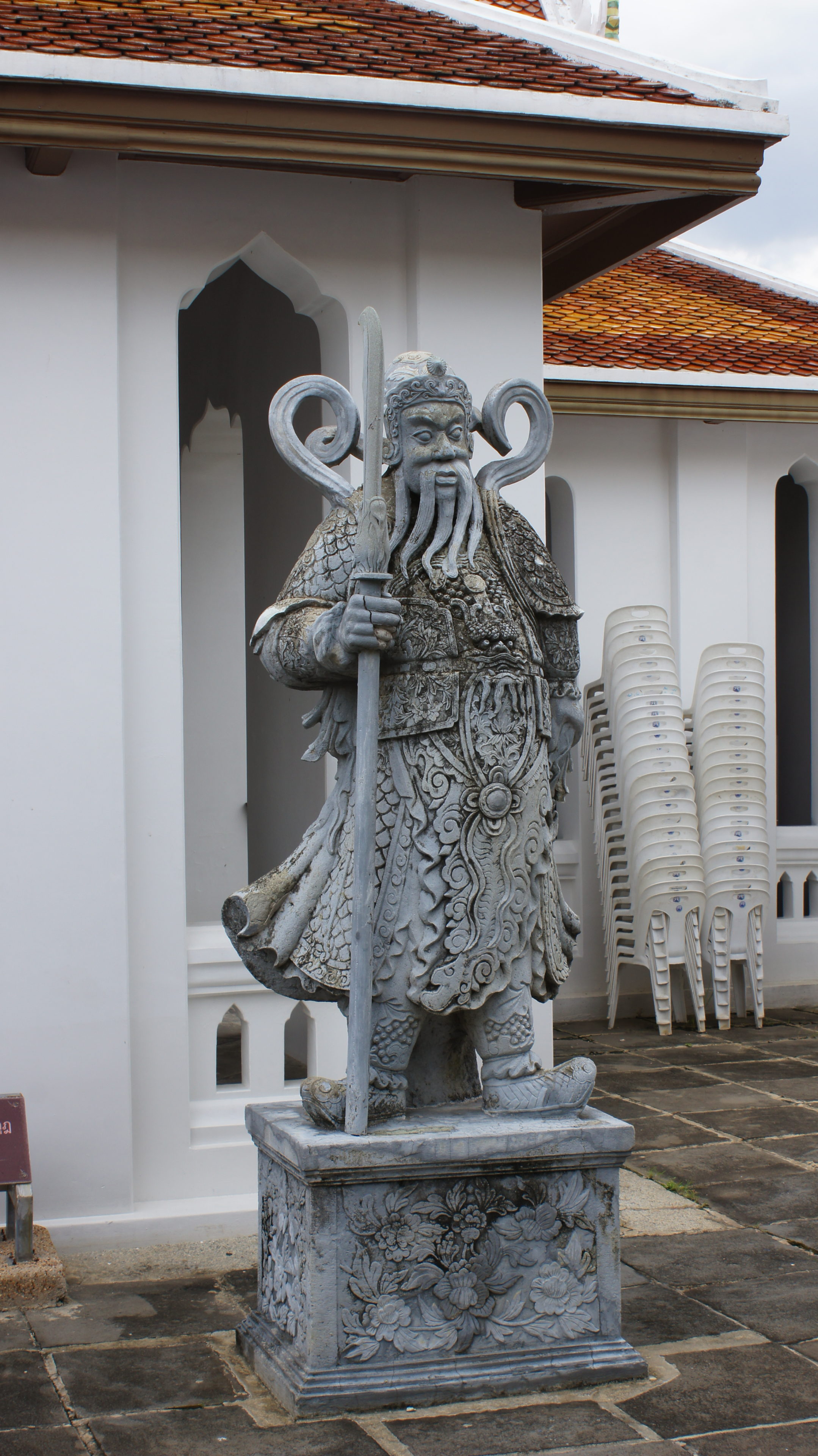
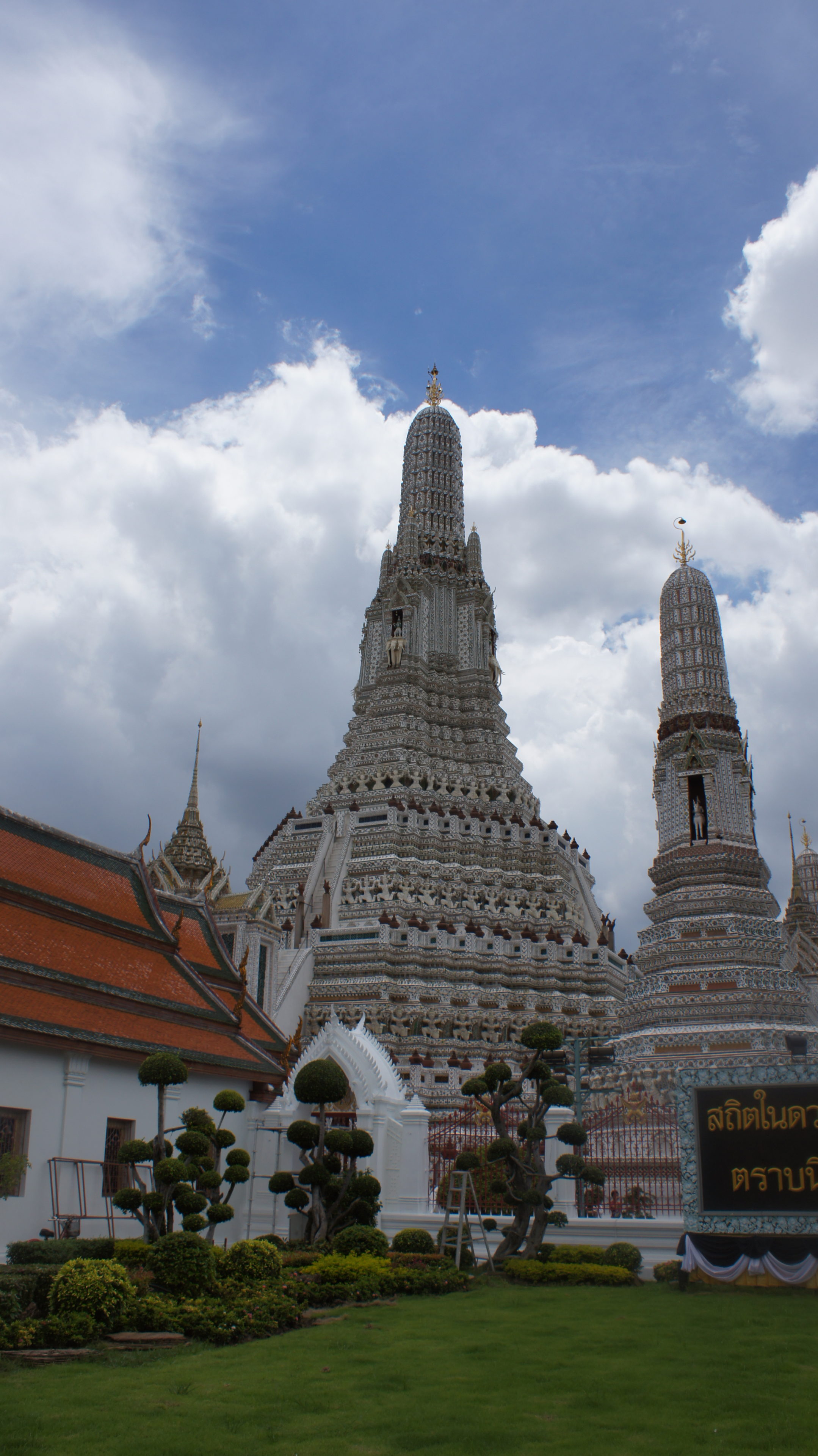
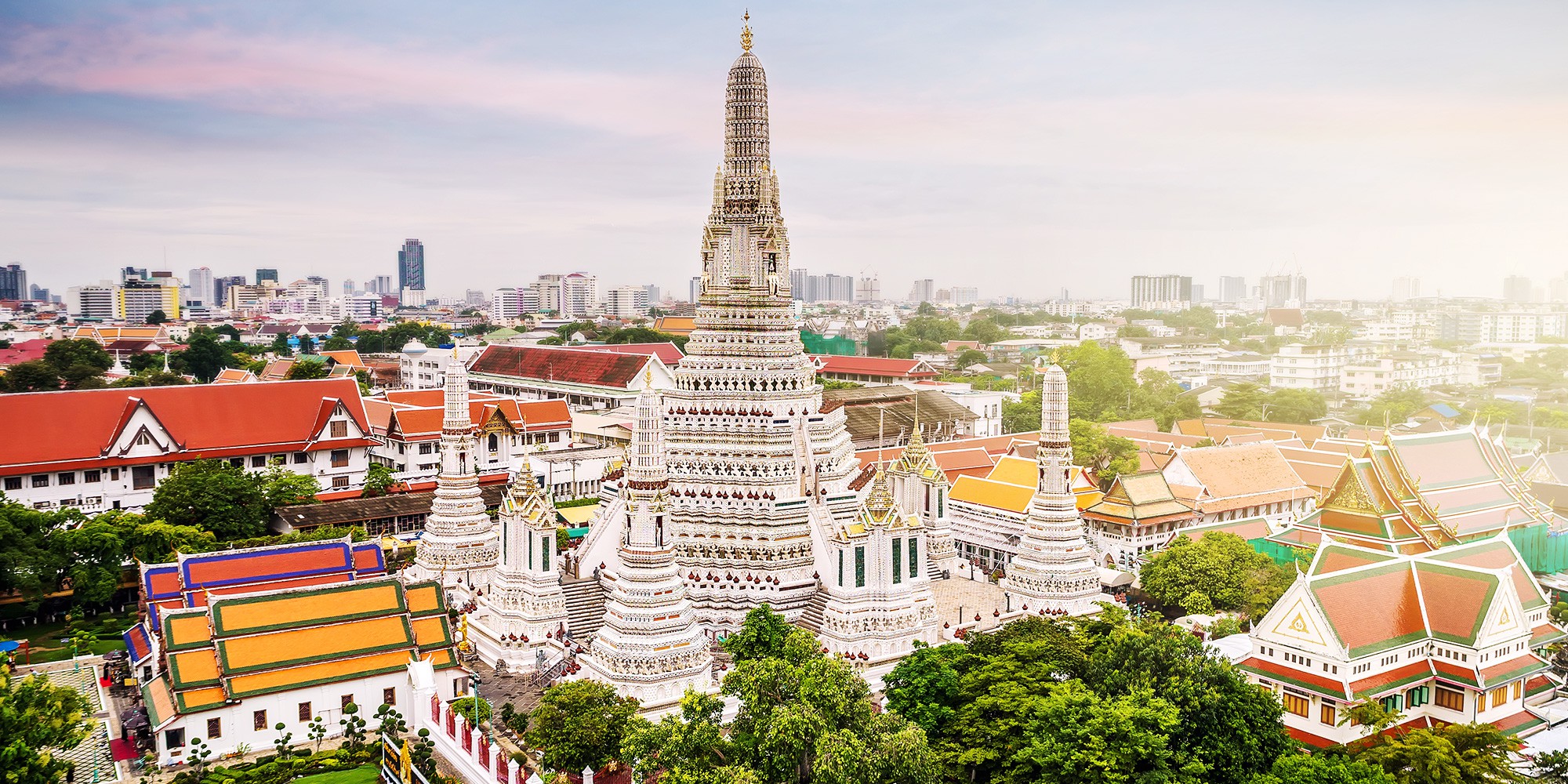
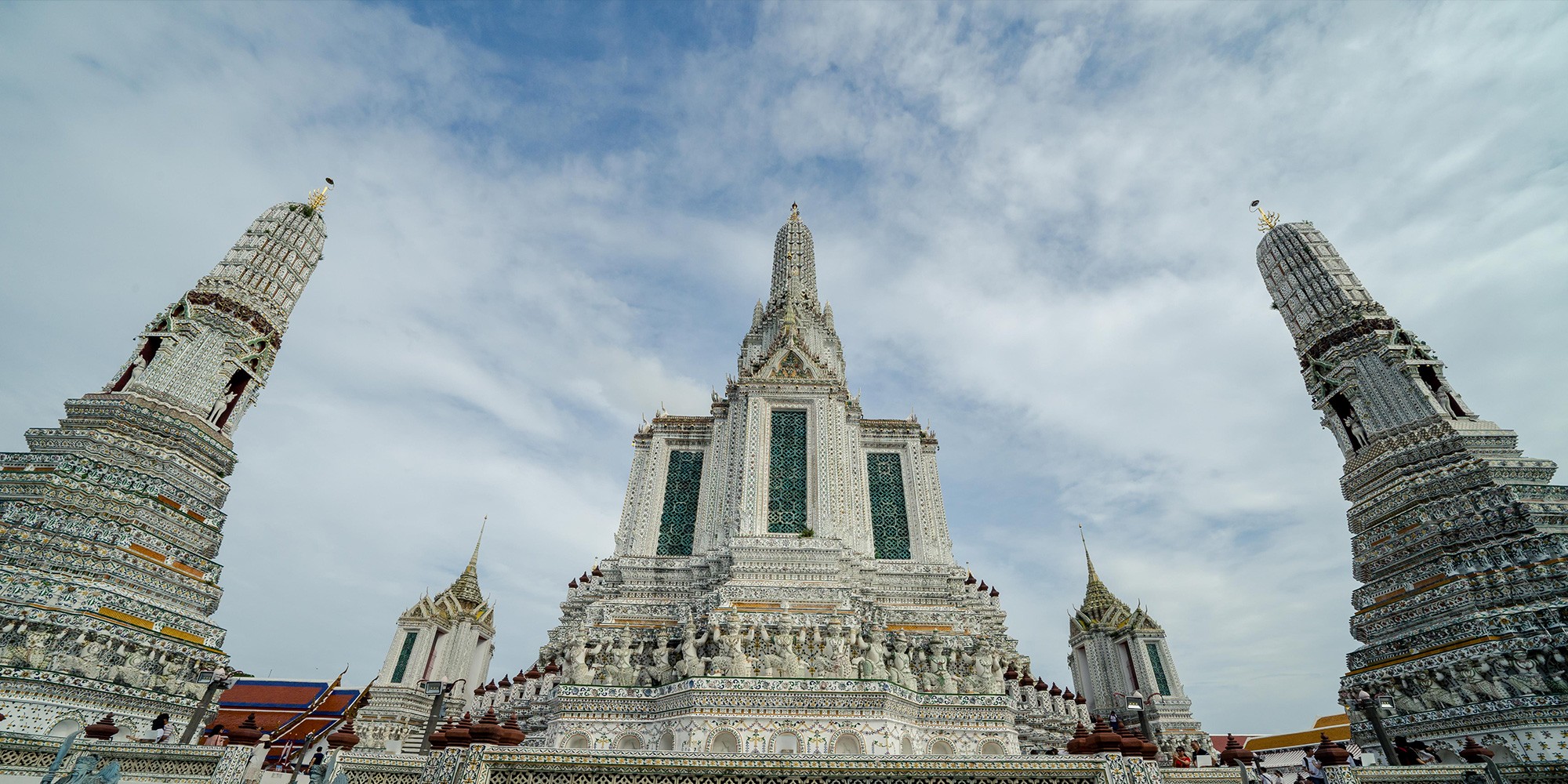
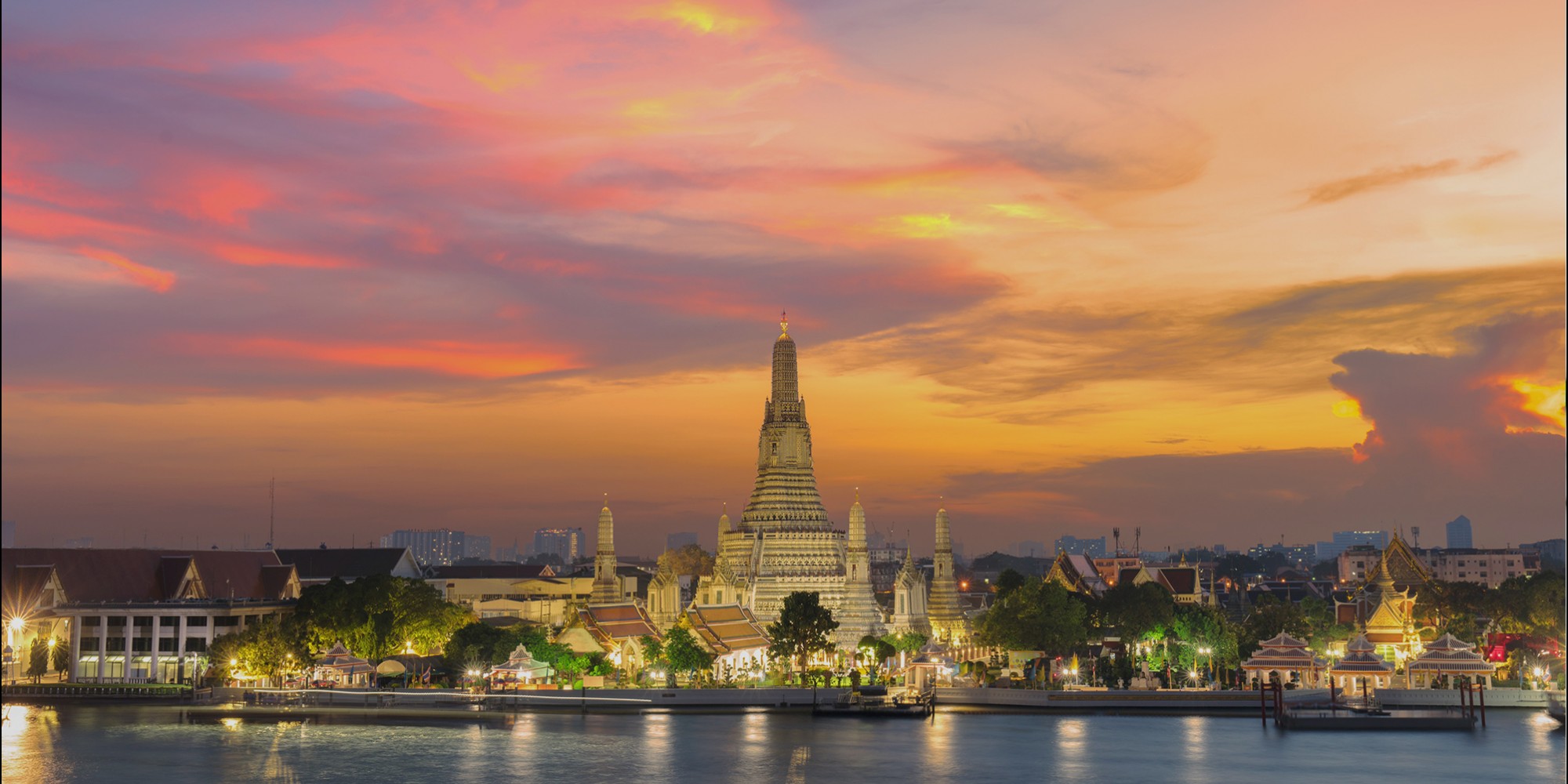
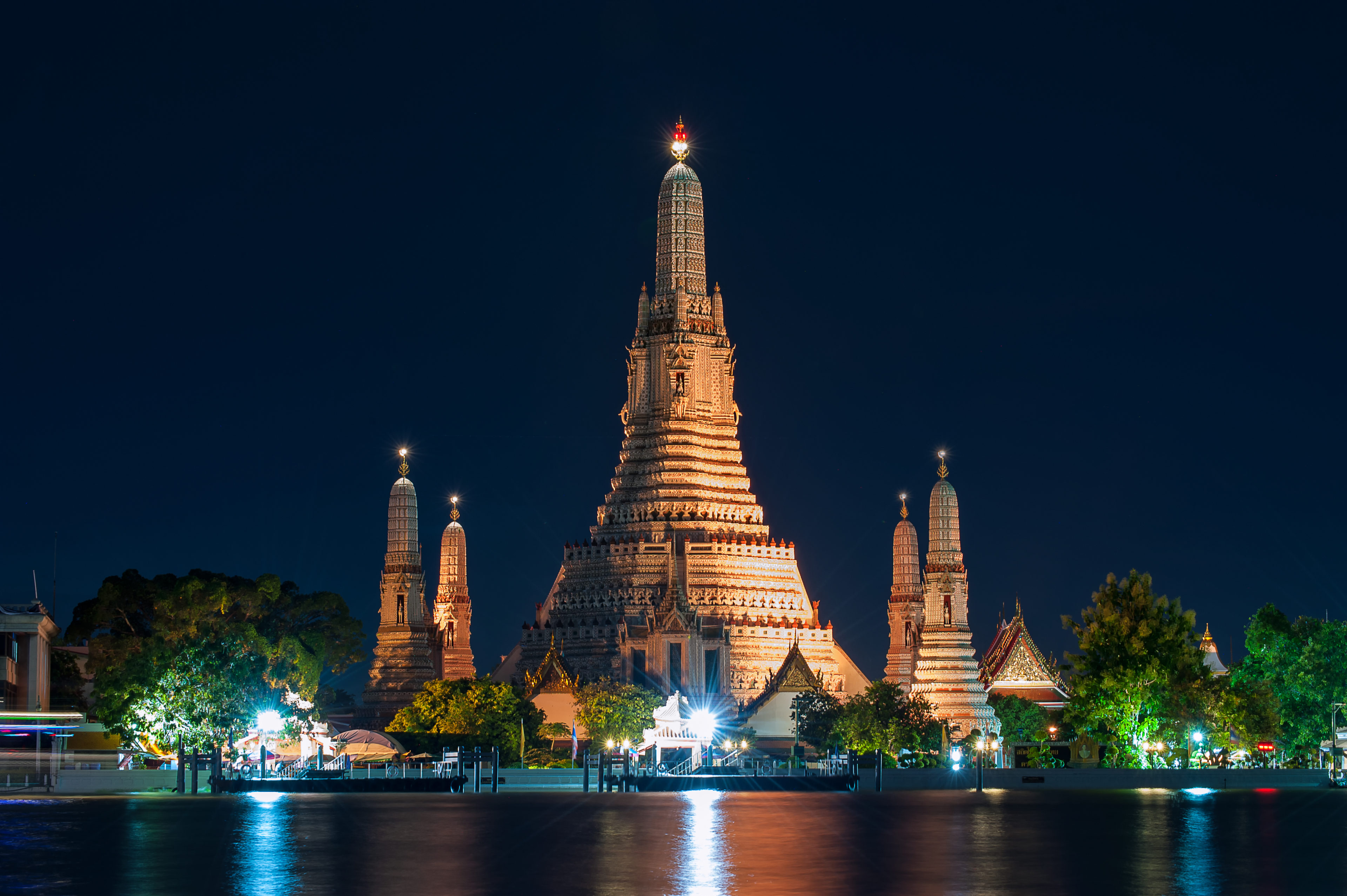
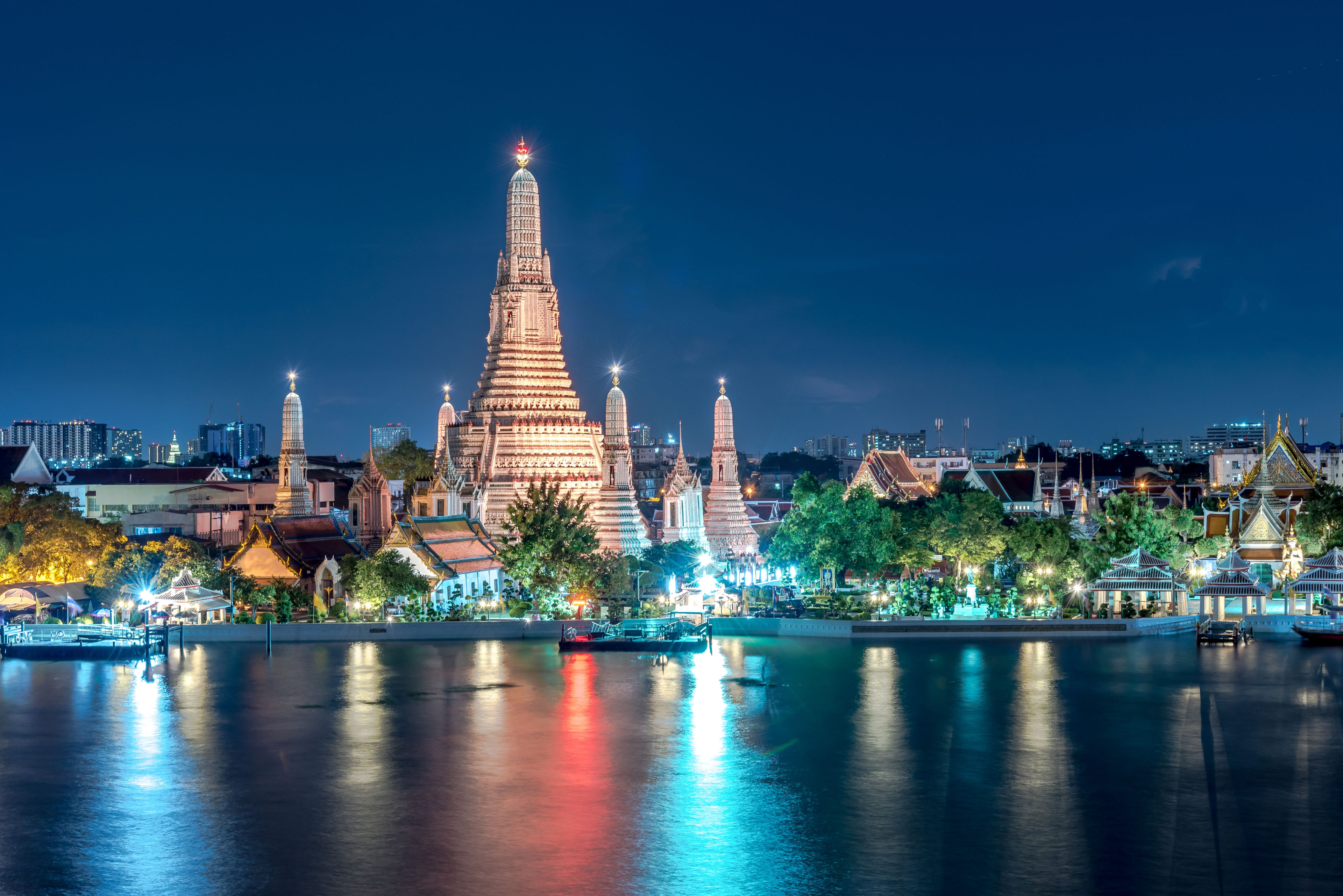
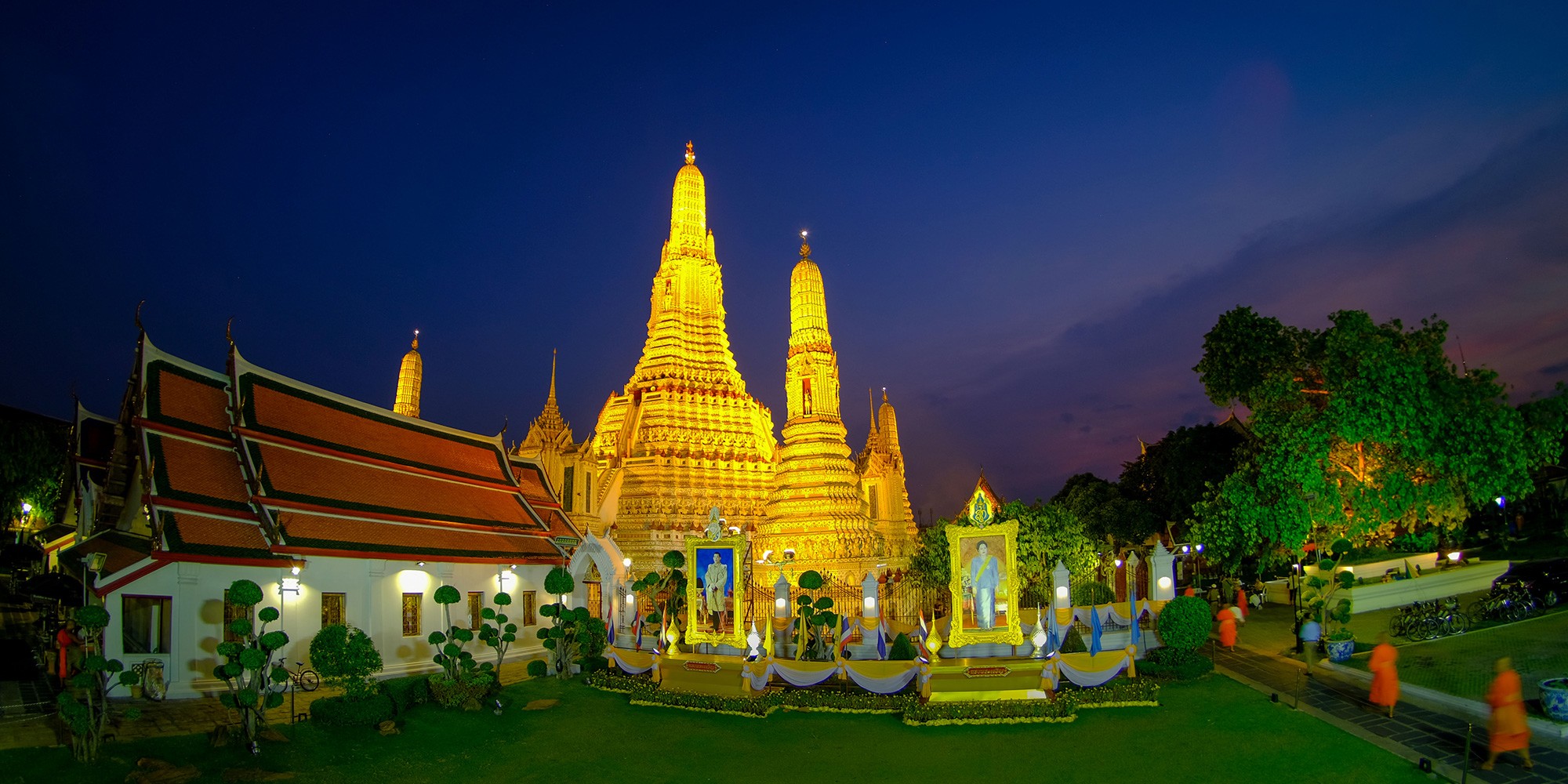
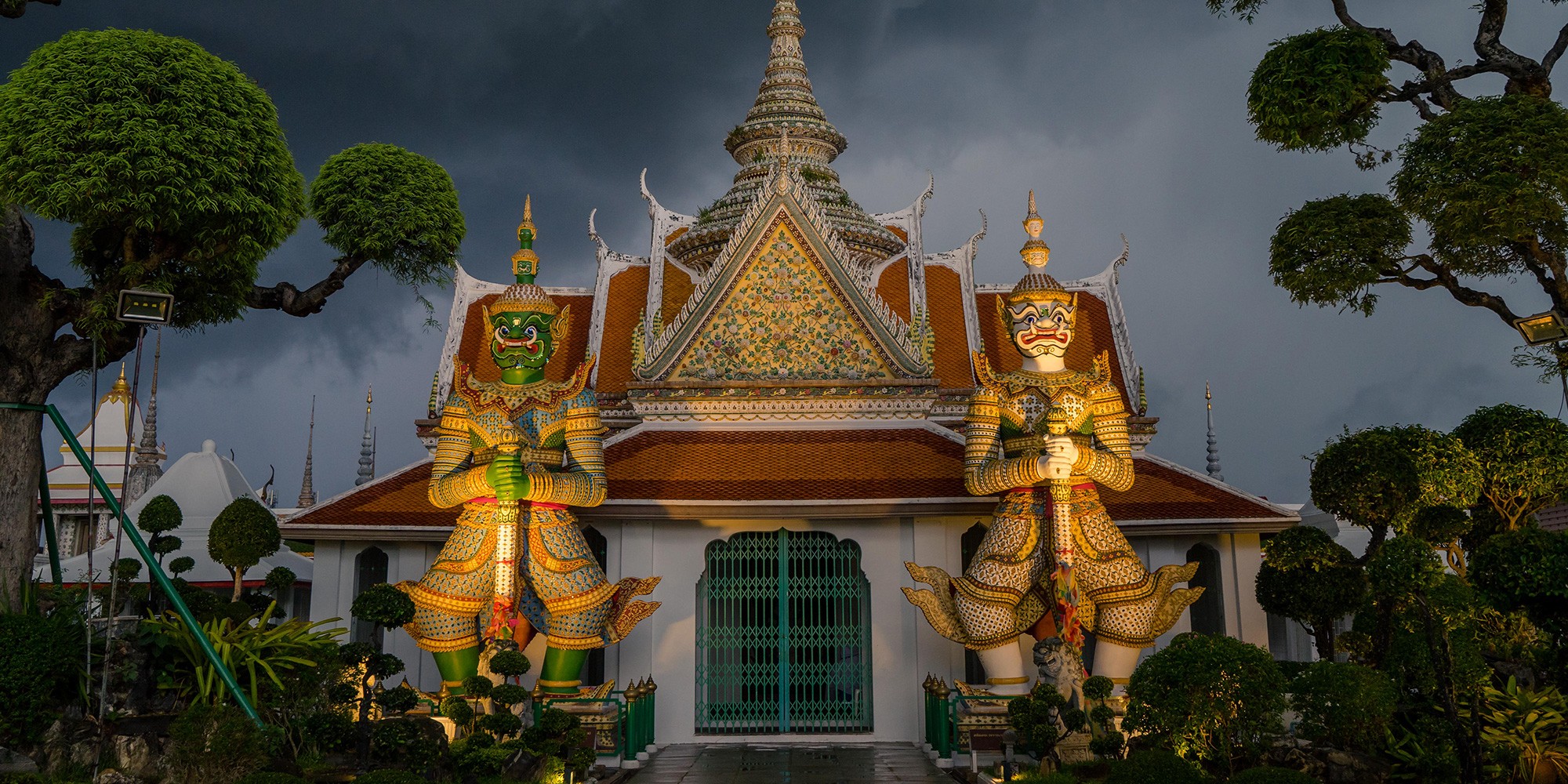
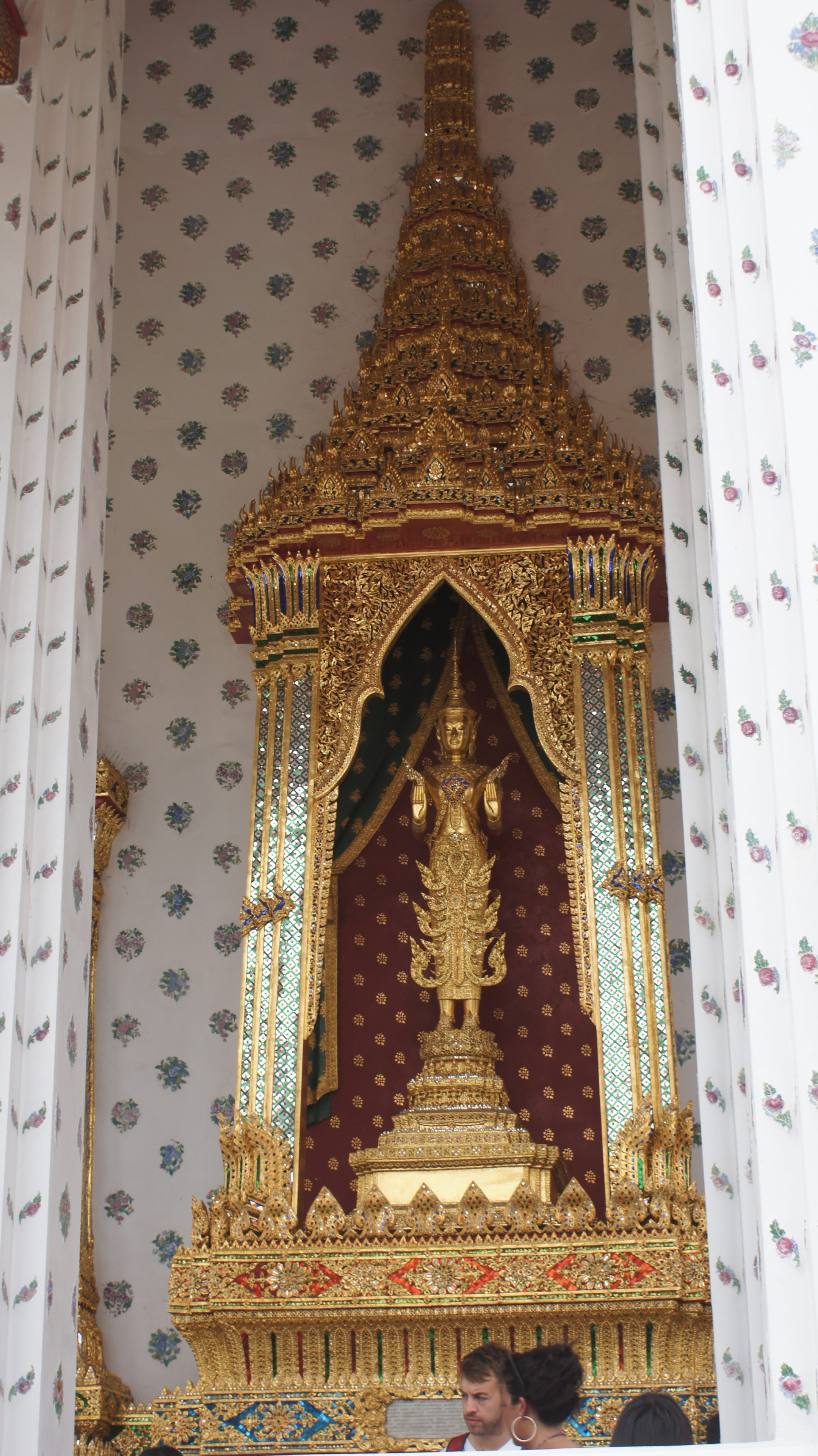
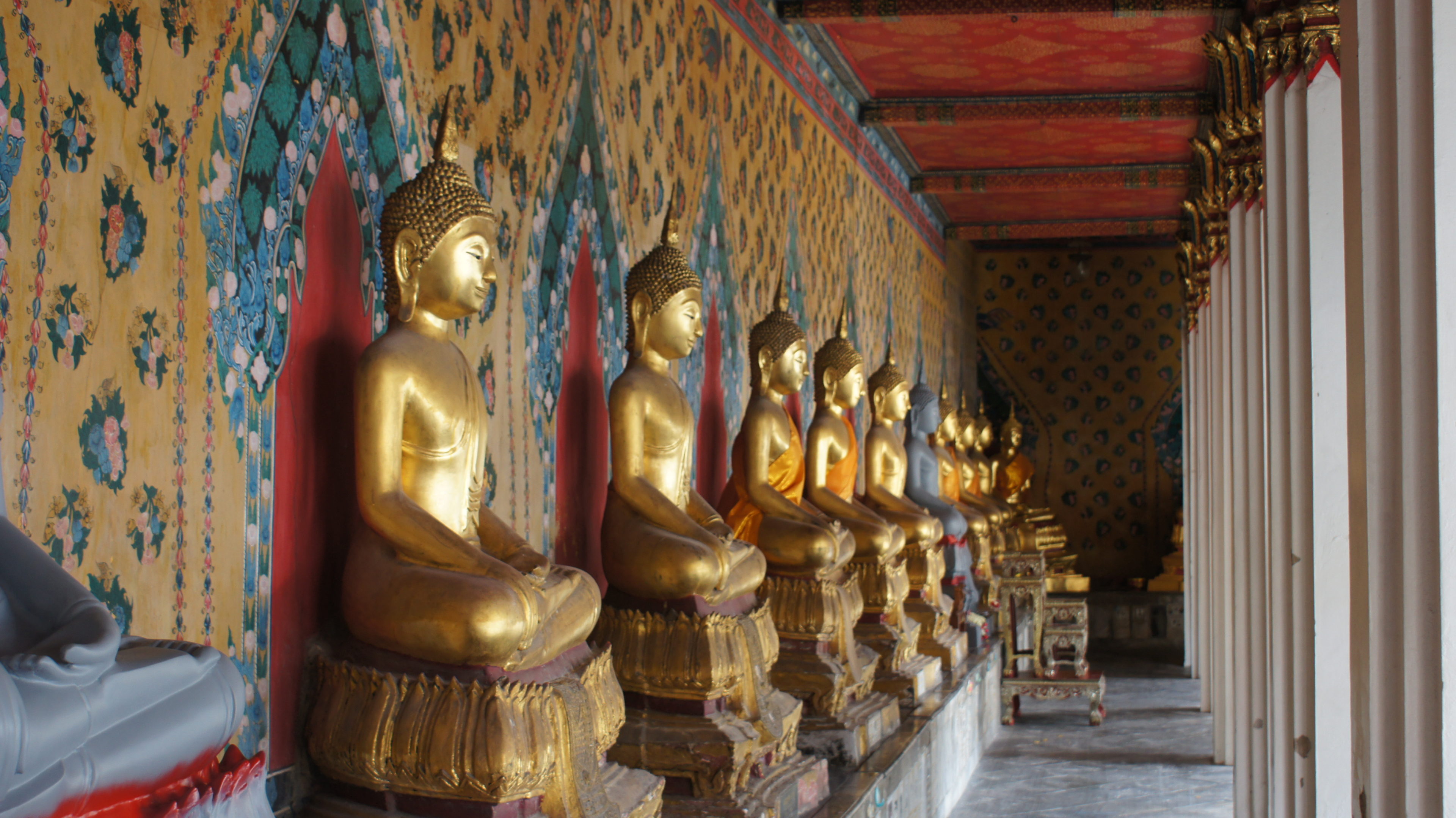
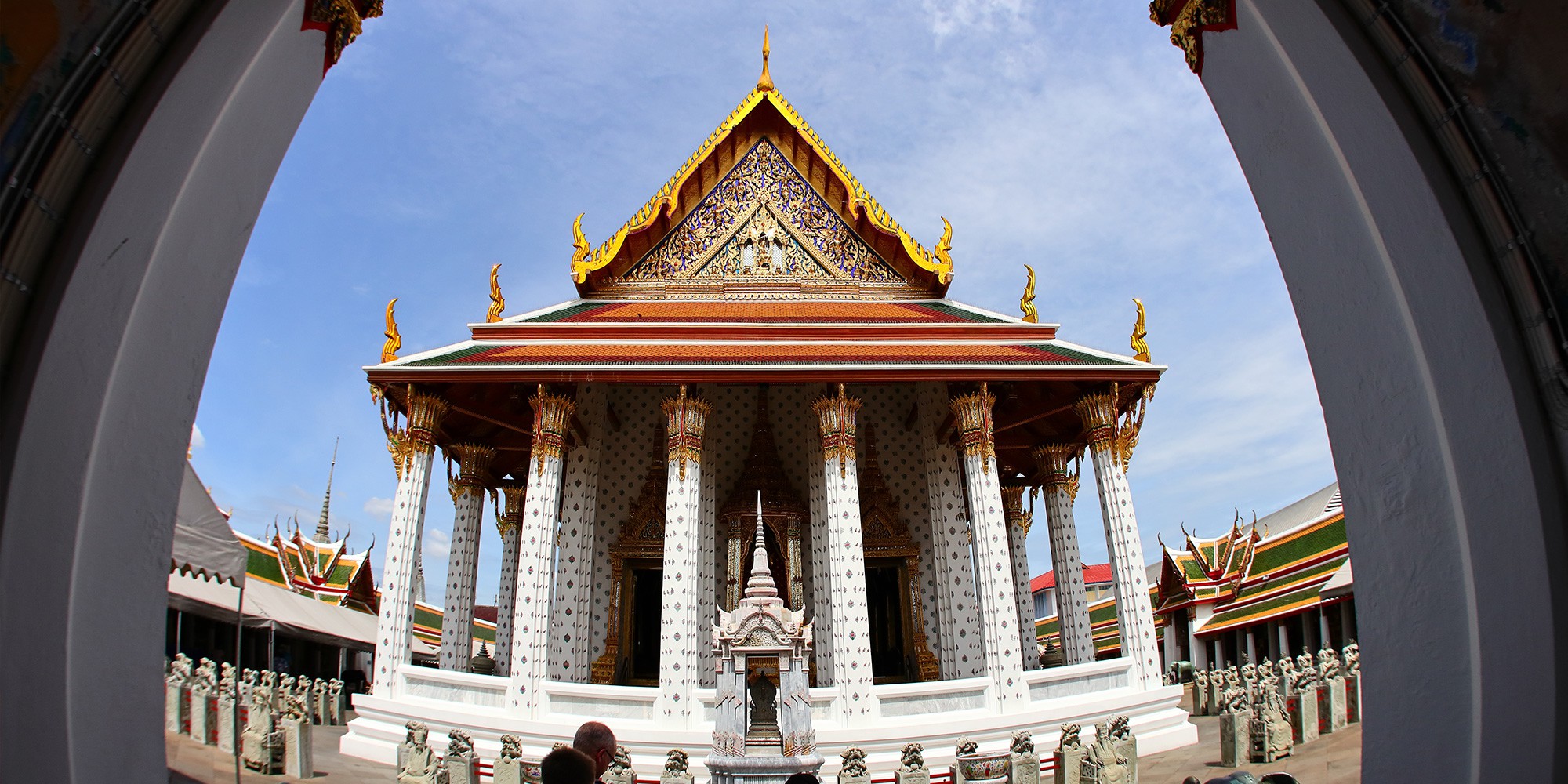
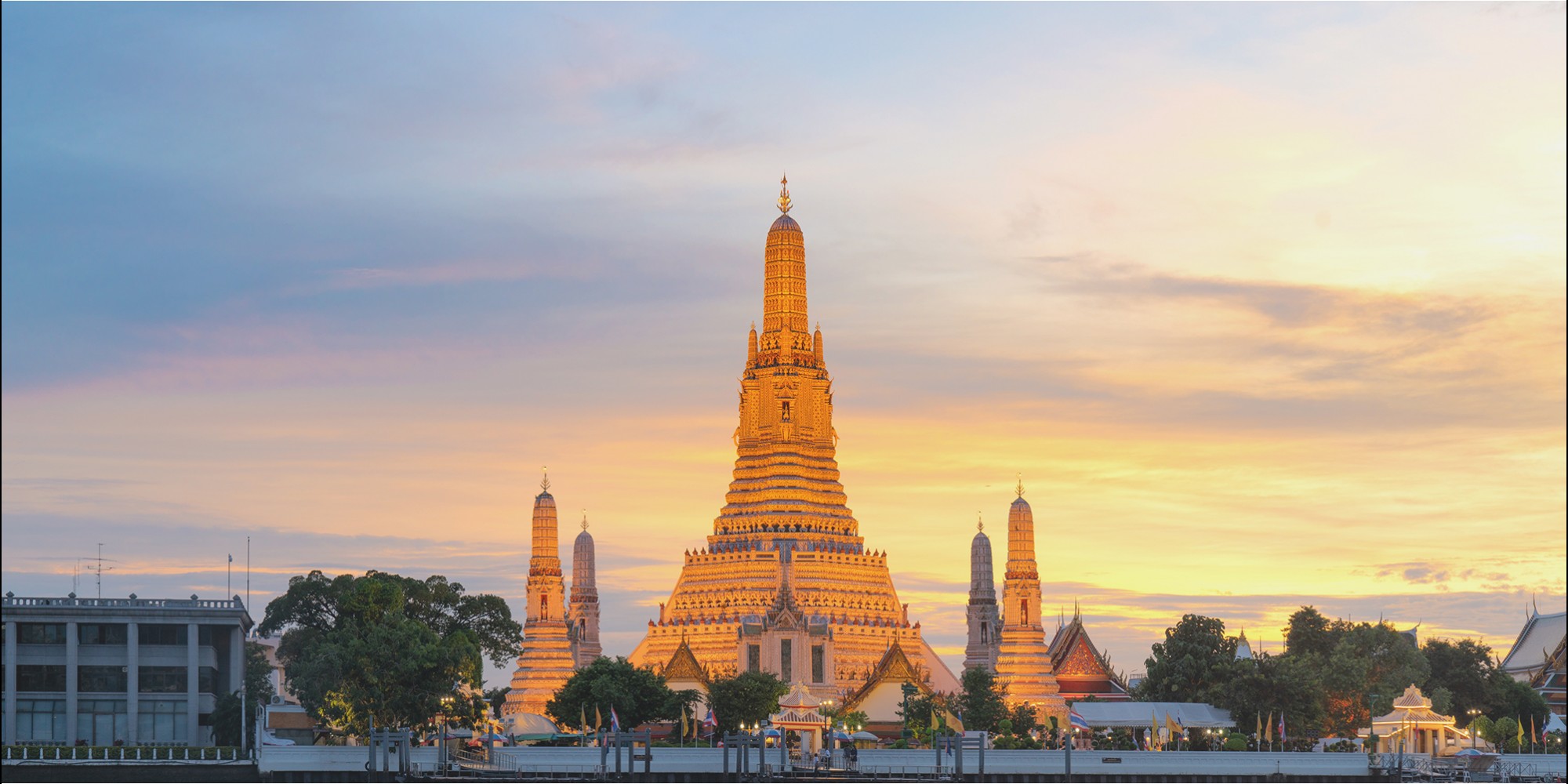
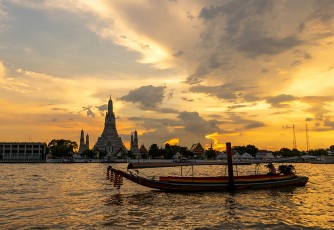
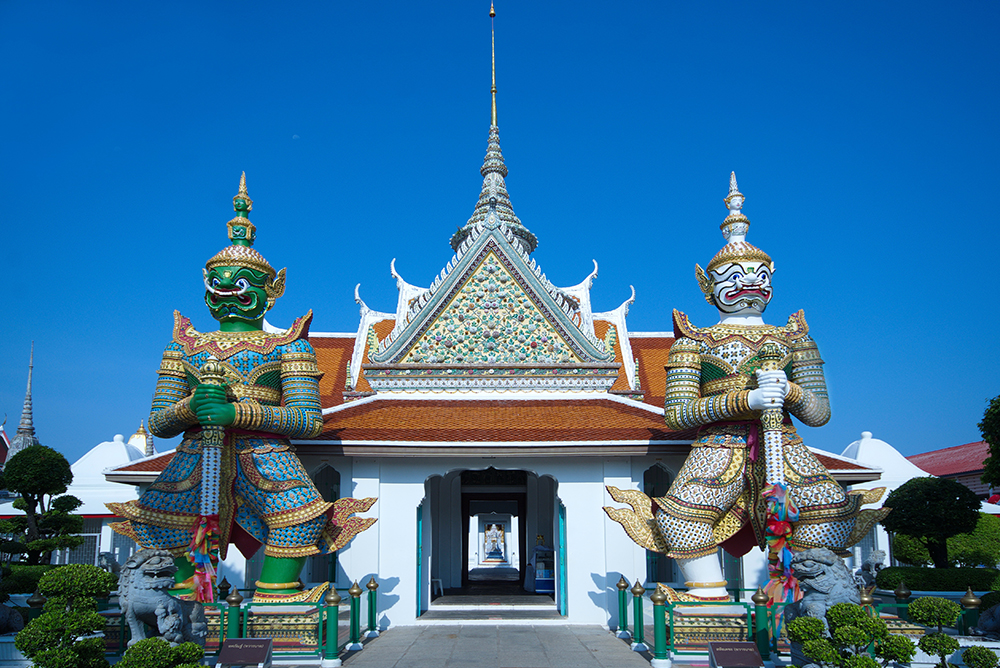
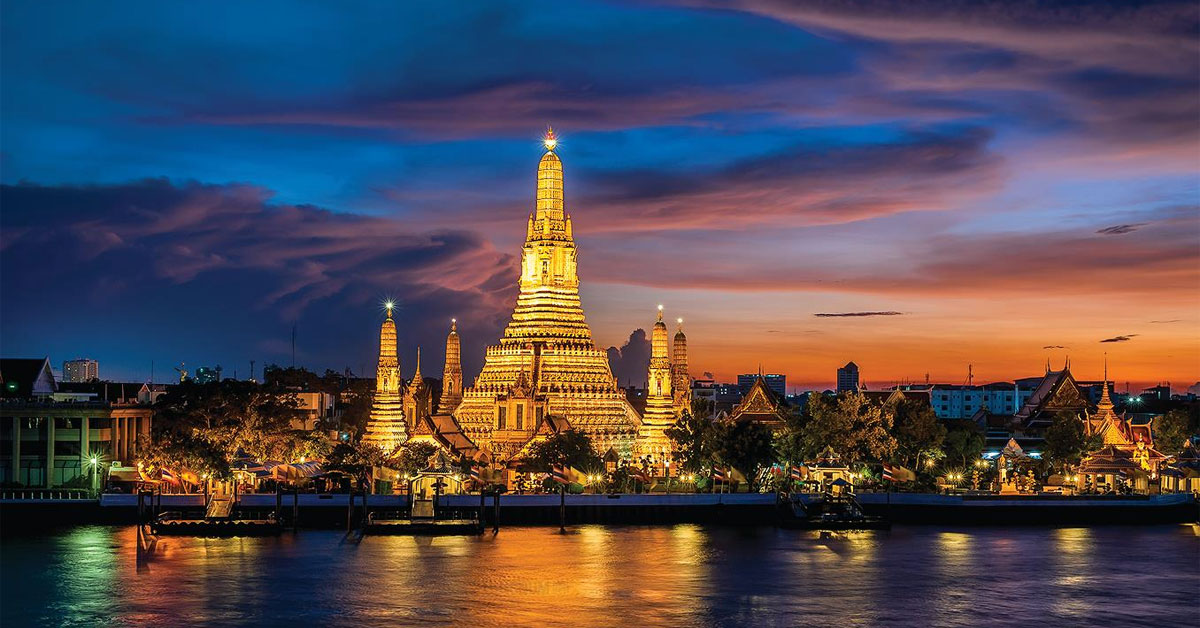
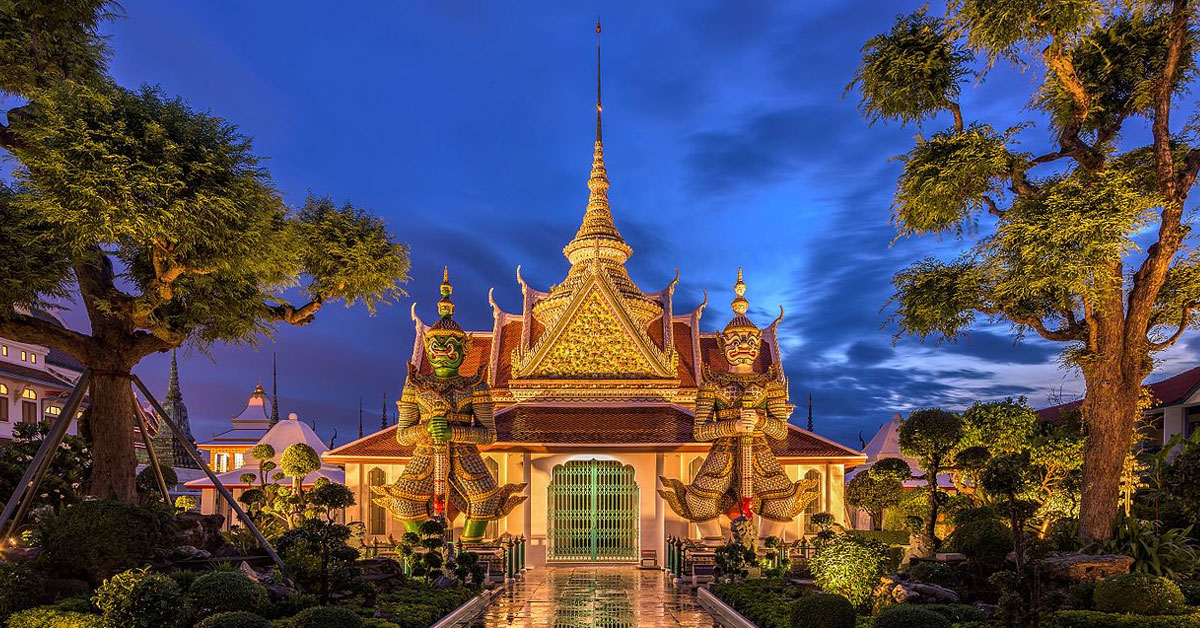
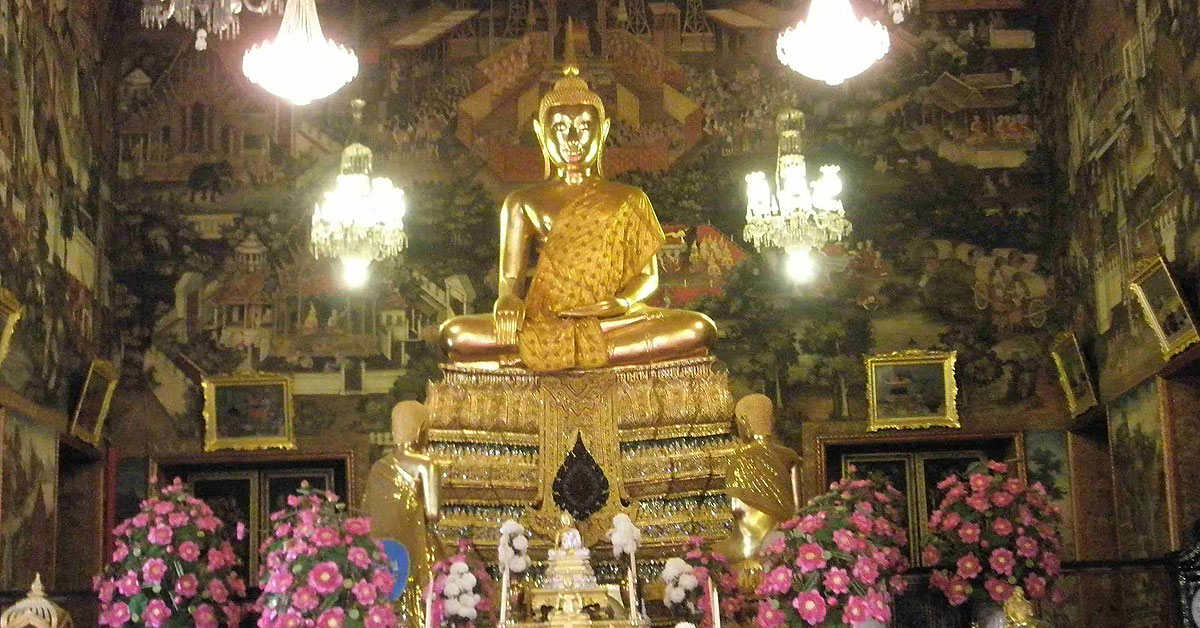
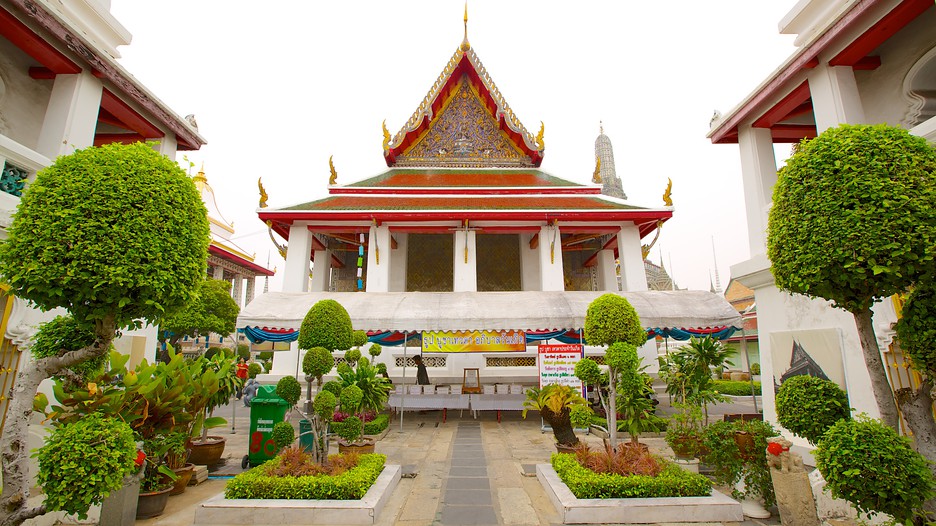
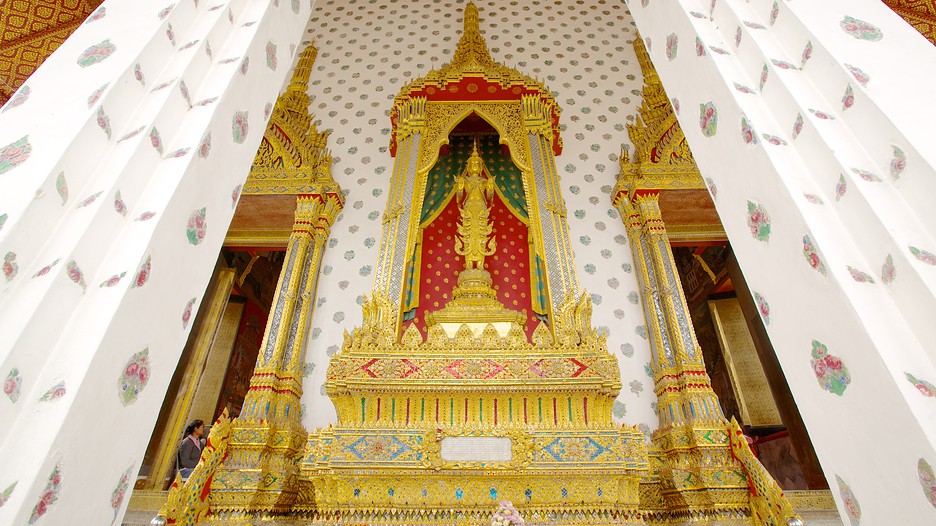
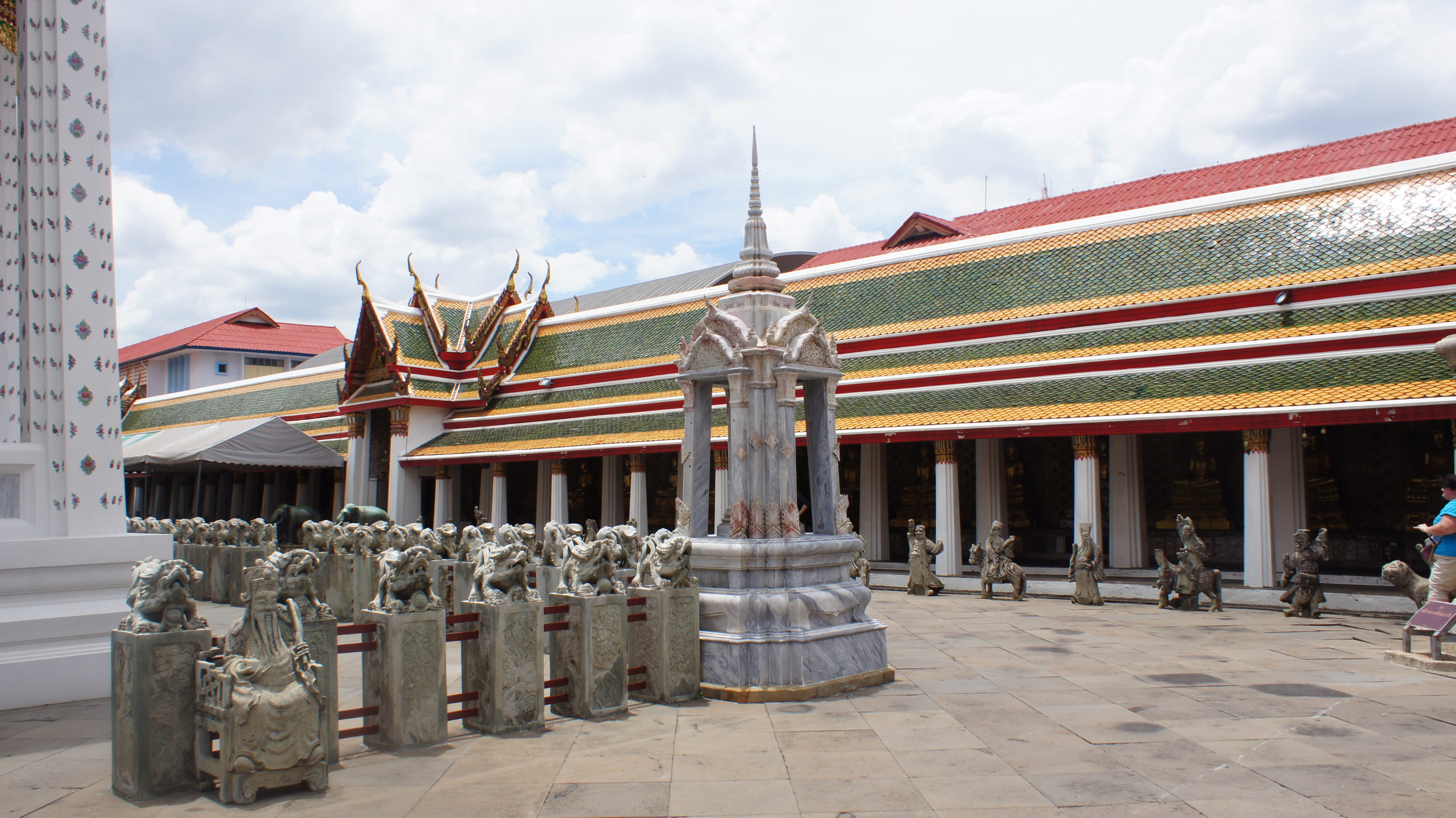
What is Wat Arun (The Temple of Dawn)
- Wat Arun Ratchawararam Ratchawaramahawihan (Thai: วัดอรุณราชวราราม ราชวรมหาวิหาร “Temple of Dawn”) is a Buddhist temple (wat) in Bangkok Yai district of Bangkok, Thailand, on the Thonburi west bank of the Chao Phraya River
- The temple derives its name from the Hindu god Aruna often personified as the radiations of the rising sun
- Wat Arun is among the best known of Thailand’s landmark
- The first light of the morning reflects off the surface of the temple with pearly iridescence
- Although the temple had existed since at least the seventeenth century, its distinctive prang (spires) were built in the early nineteenth century during the reign of King Rama II
Describe Wat Arun (The Temple of Dawn)
Architecture

- The main feature of Wat Arun is its central prang (Khmer-style tower) which is encrusted with colourful porcelain
- This is interpreted as a stupa-like pagoda encrusted with coloured faience
- The height is reported by different sources as between 66.8 m (219 ft) and 86 m (282 ft)
- The corners are surrounded by four smaller satellite prang
- The prang are decorated by seashells and bits of porcelain which had previously been used as ballast by boats coming to Bangkok from China
- The central prang is topped with a seven-pronged trident, referred to by many sources as the “Trident of Shiva“
- Around the base of the prang are various figures of ancient Chinese soldiers and animals
- Over the second terrace are four statues of the Hindu god Indra riding on Erawan
- In the Buddhist iconography, the central prang is considered to have three symbolic levels—base for Traiphum indicating all realms of existence, middle for Tavatimsa where all desires are gratified and top denoting Devaphum indicating six heavens within seven realms of happiness
- At the riverside are six pavilions (sala) in Chinese style
- The pavilions are made of green granite and contain landing bridges
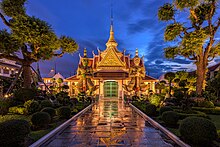
- Next to the prang is the Ordination Hall with a Niramitr Buddha image supposedly designed by King Rama II
- The front entrance of the Ordination Hall has a roof with a central spire, decorated in coloured ceramic and stuccowork sheathed in coloured china
- There are two demons, or temple guardian figures, in front
- The murals were created during the reign of Rama V
Describe Cosmology of Wat Arun (The Temple of Dawn)
- The central prang symbolises Mount Meru of the Hindu cosmology
- The satellite prang are devoted to the wind god, Phra Phai
- The demons (yaksha) at the entranceway to the ubosot are from the Ramakien
- The white figure is named Sahassa Deja and the green one is known as Thotsakan, the Demon Rāvana from Ramayana
- Wat Arun can be easily accessed through the Chao Phraya River and ferries travel across the river towards the Maharaj pier
- During Kathina, the king travels to Wat Arun in a procession of royal barges to present new robes to the monks there
WAT SUTHAT : SPECTACULAR VIEWS
- Wat Suthat Thepwararam is a Buddhist temple in Bangkok, Thailand
- It is a royal temple of the first grade, one of ten such temples in Bangkok (23 in Thailand)
- Construction was begun by King Rama I in 2350 BE (1807 CE)
- In the beginning time it was called “Wat Maha Sutthawat” and located in the combretum grove
- Further construction and decorations were carried out by King Rama II who helped carve the wooden doors, but the temple was not completed until the reign of King Rama III in 2390 BE (1847–1848 CE)
- This temple contains the Buddha image Phra Sri Sakyamuni which have been moved from Sukhothai Province
- At the lower terrace of the base, there are 28 Chinese pagodas which symbolize the 28 Buddhas born on this earth
- In 2005 CE, the temple was submitted to UNESCO for consideration as a future World Heritage Site
